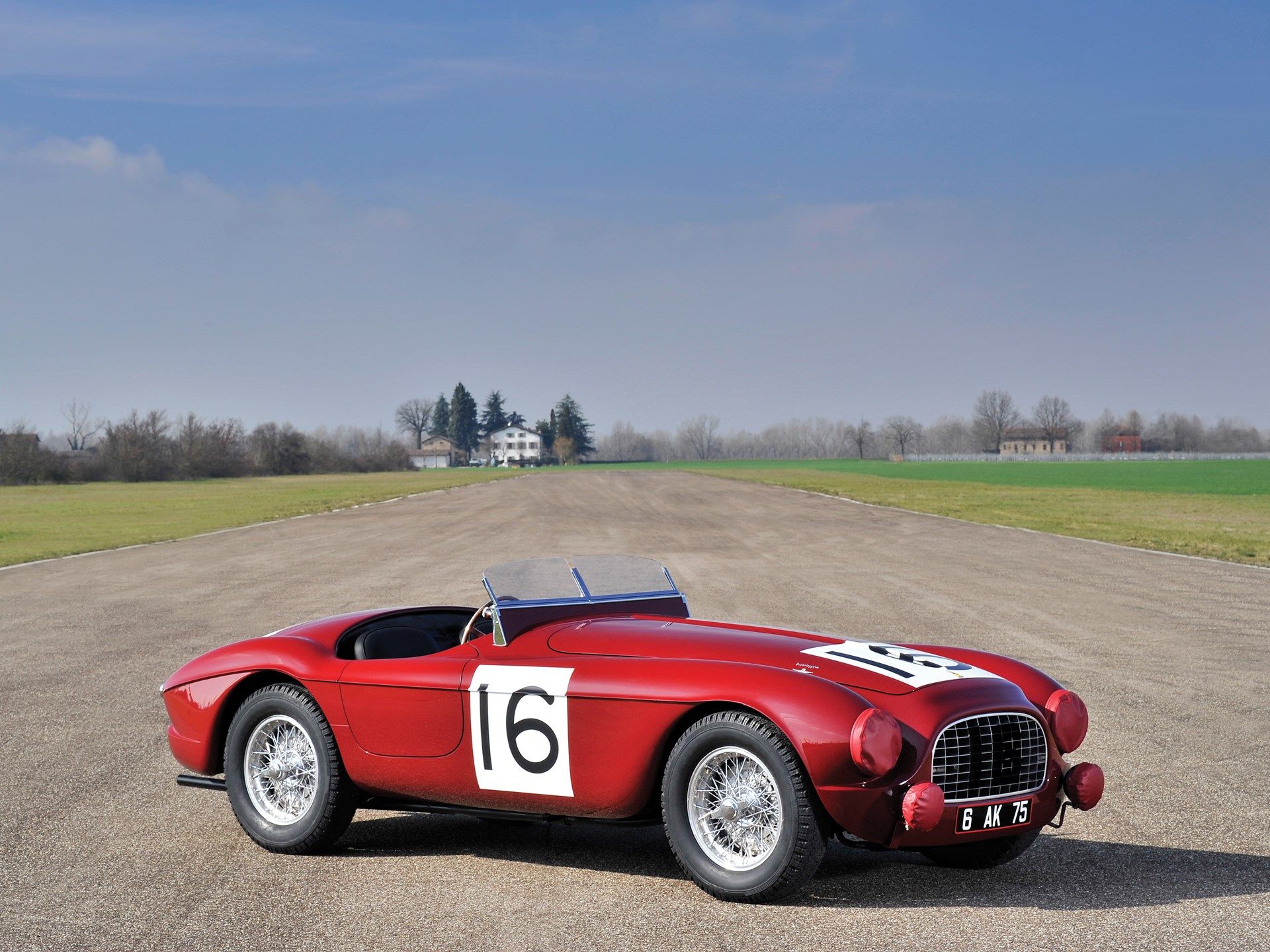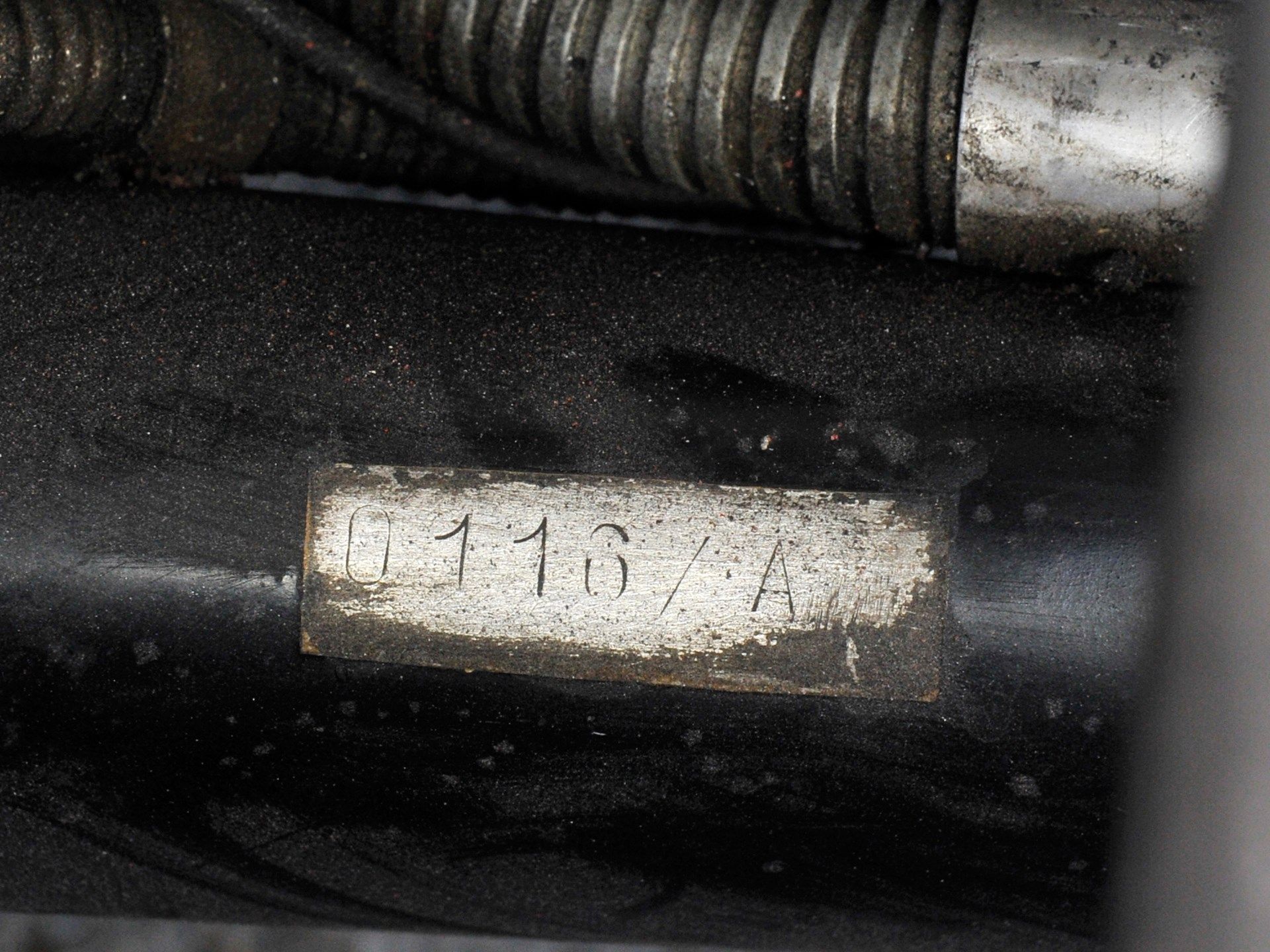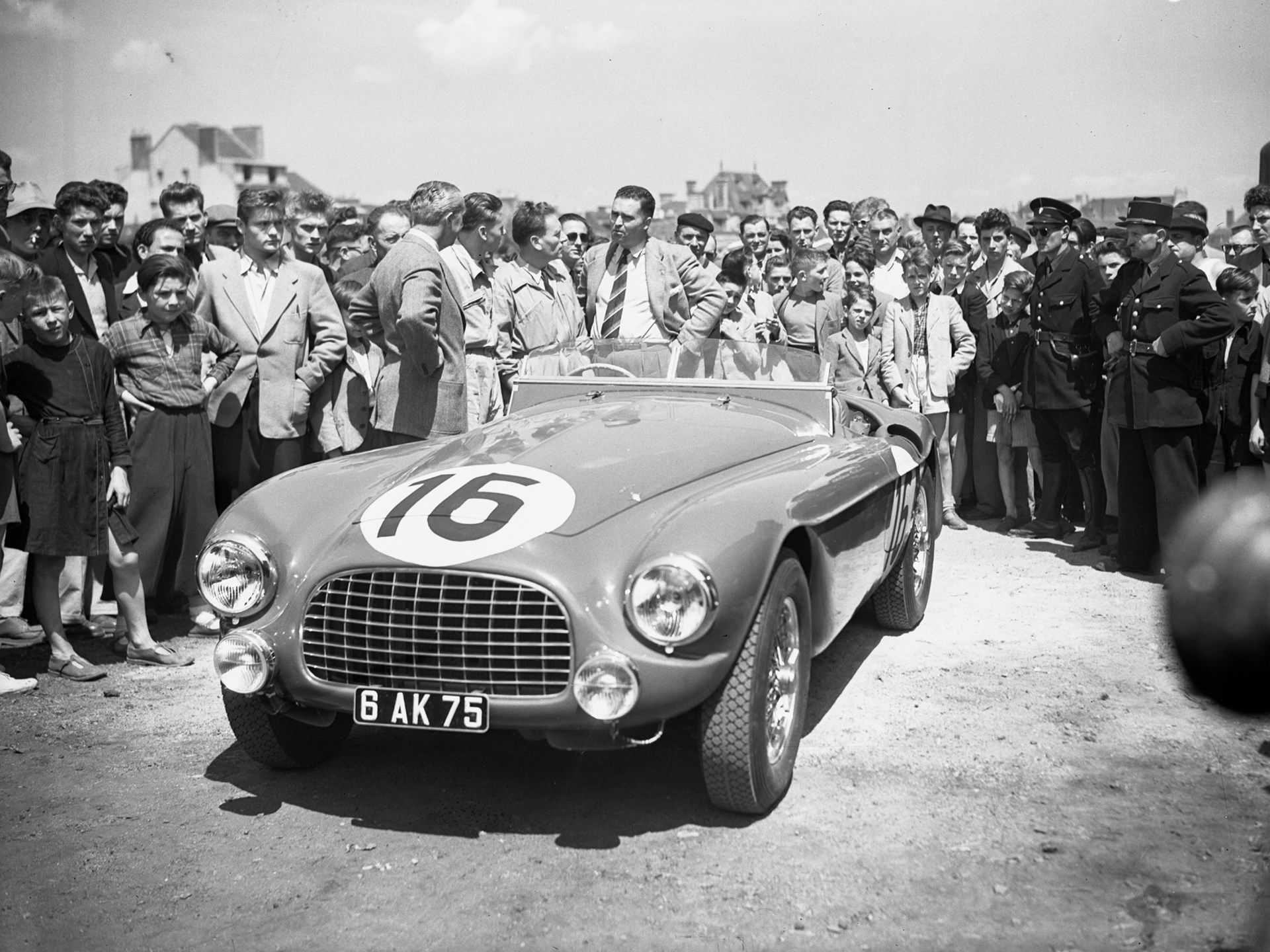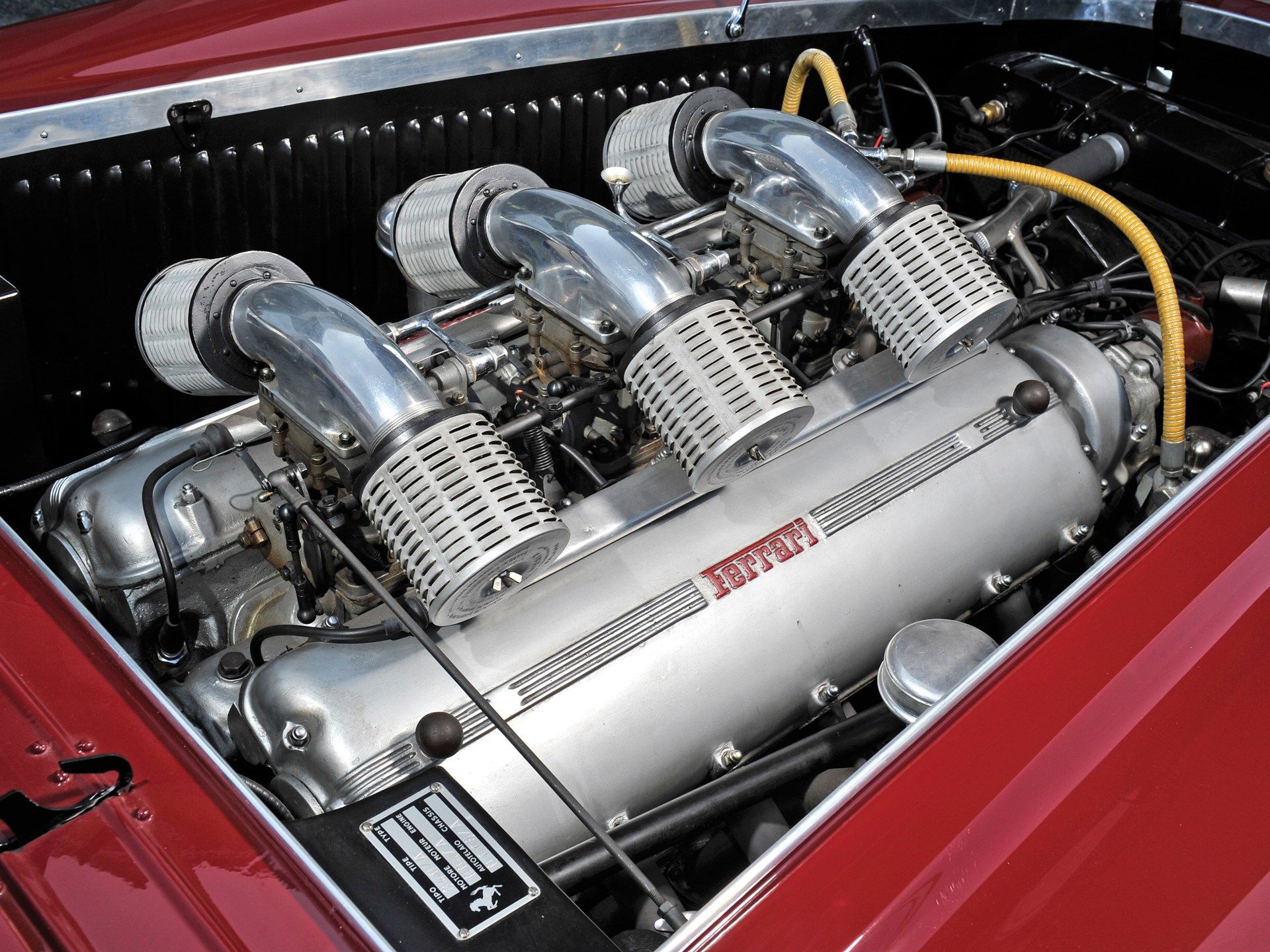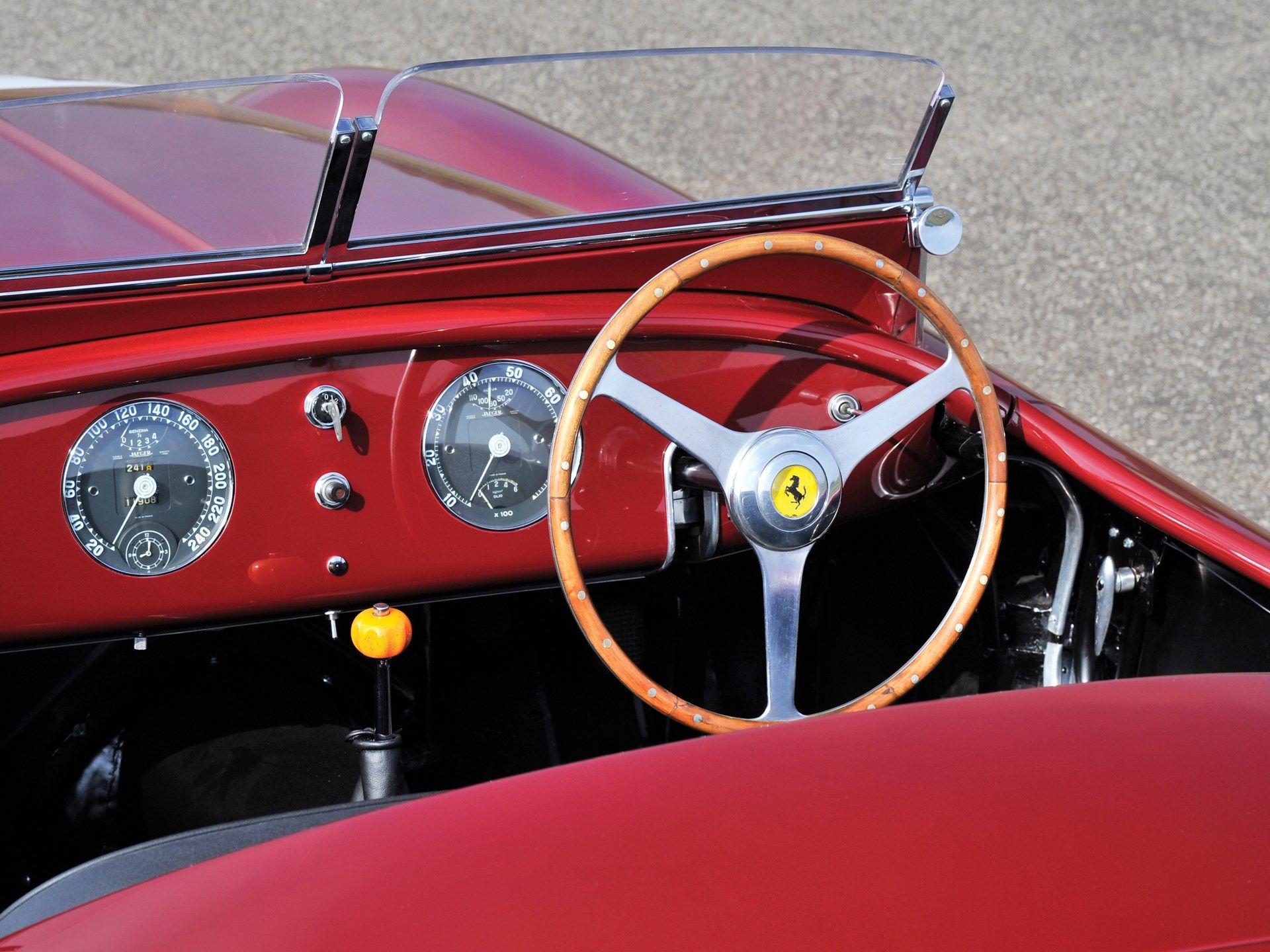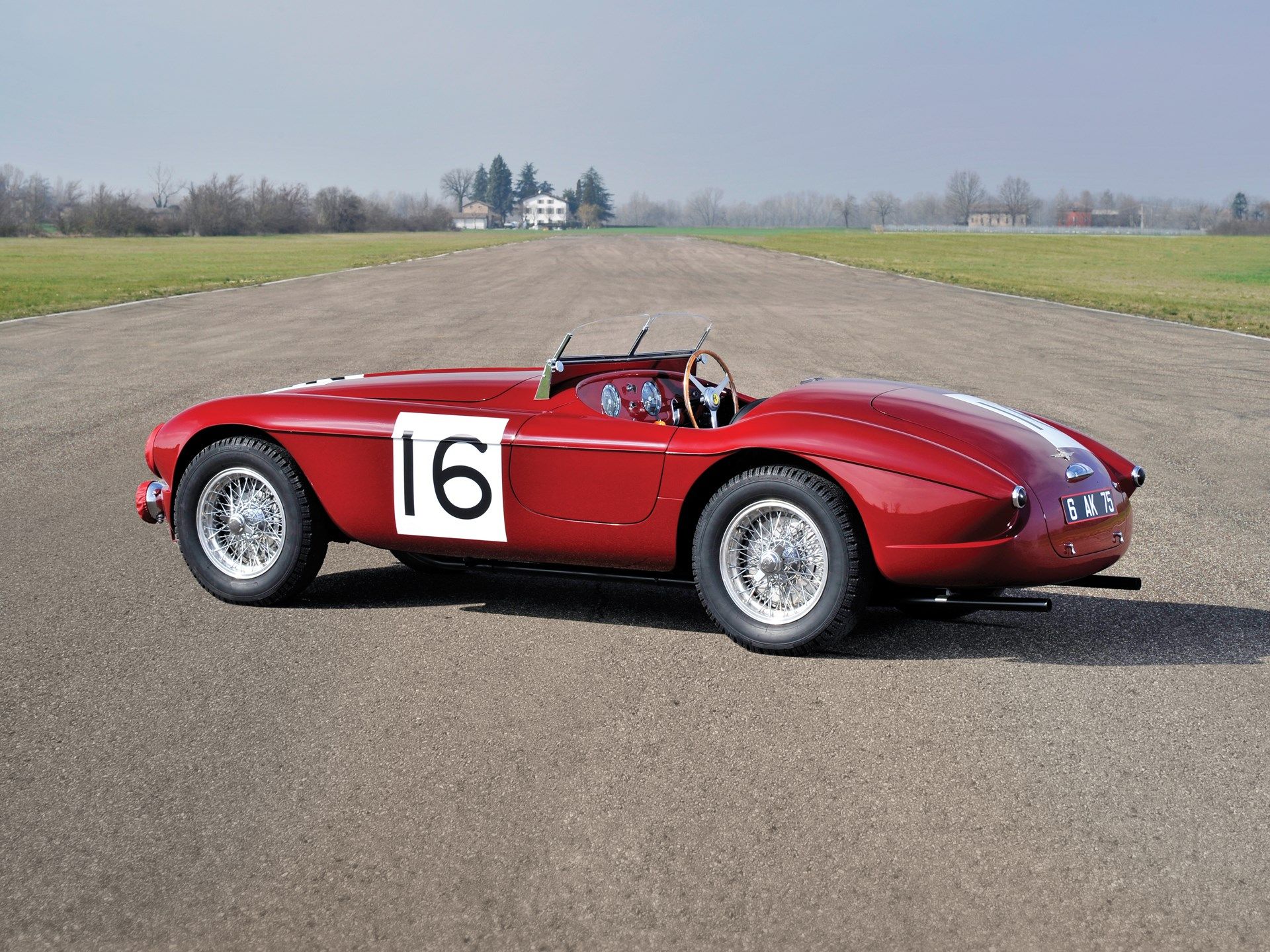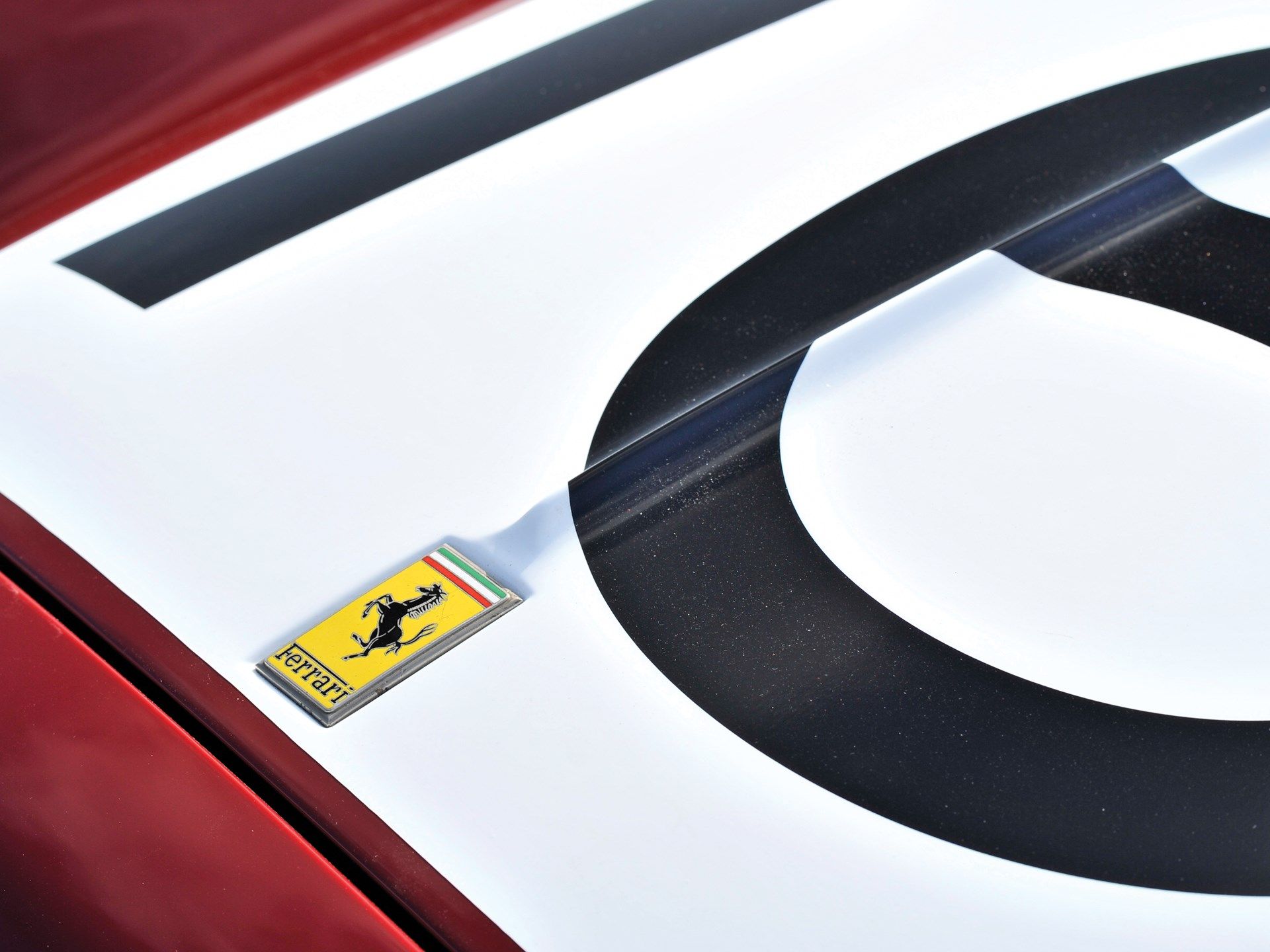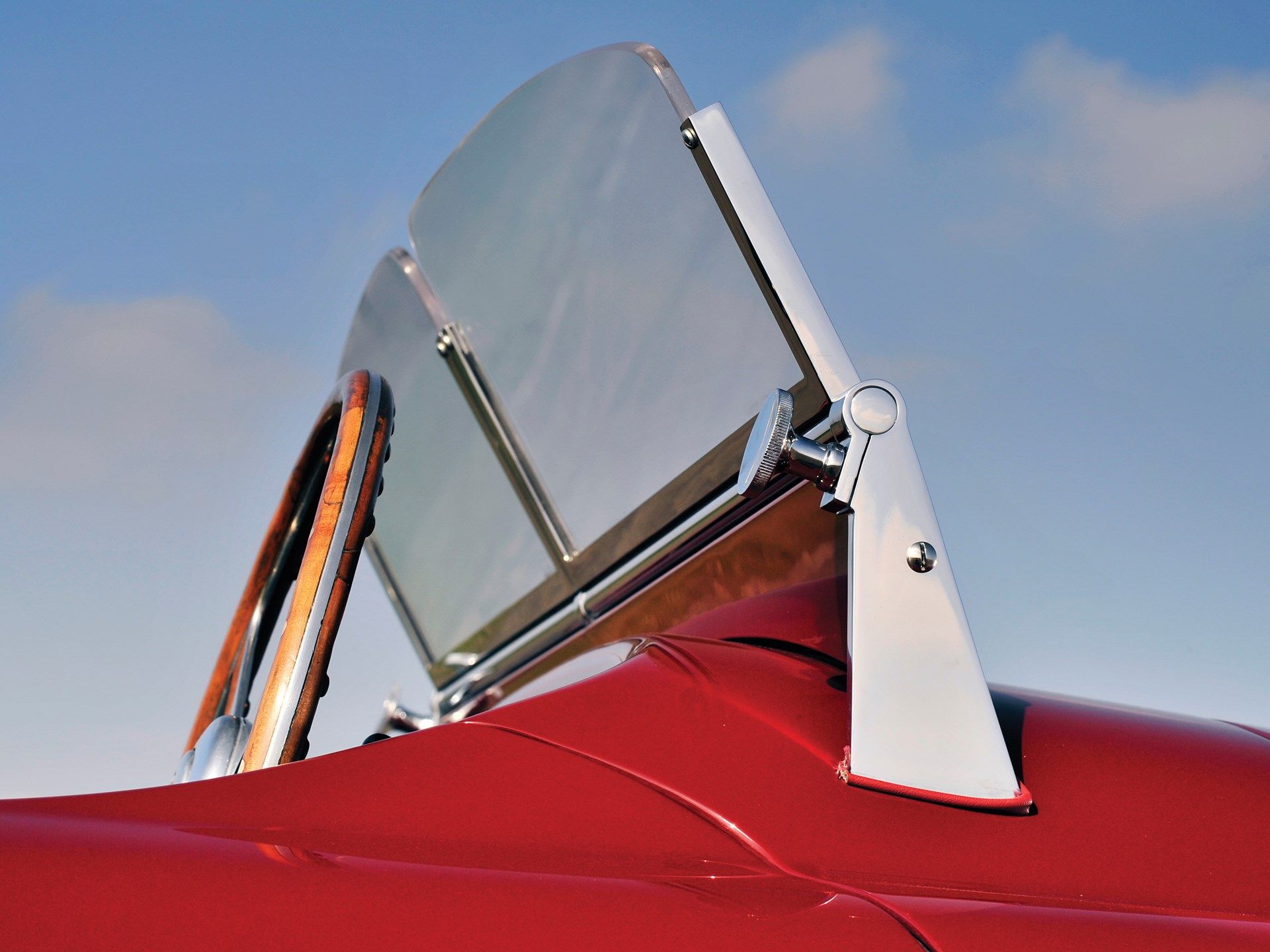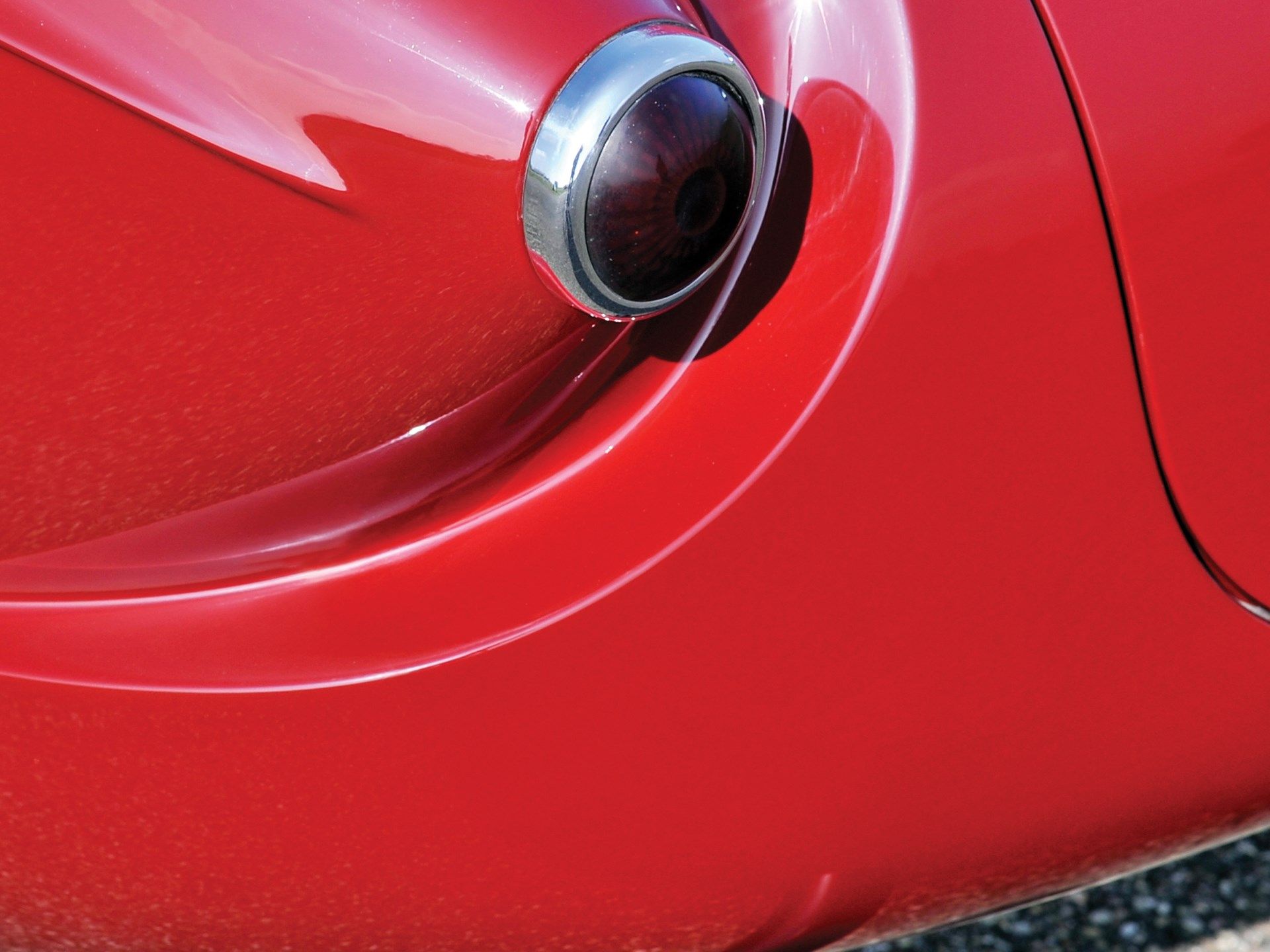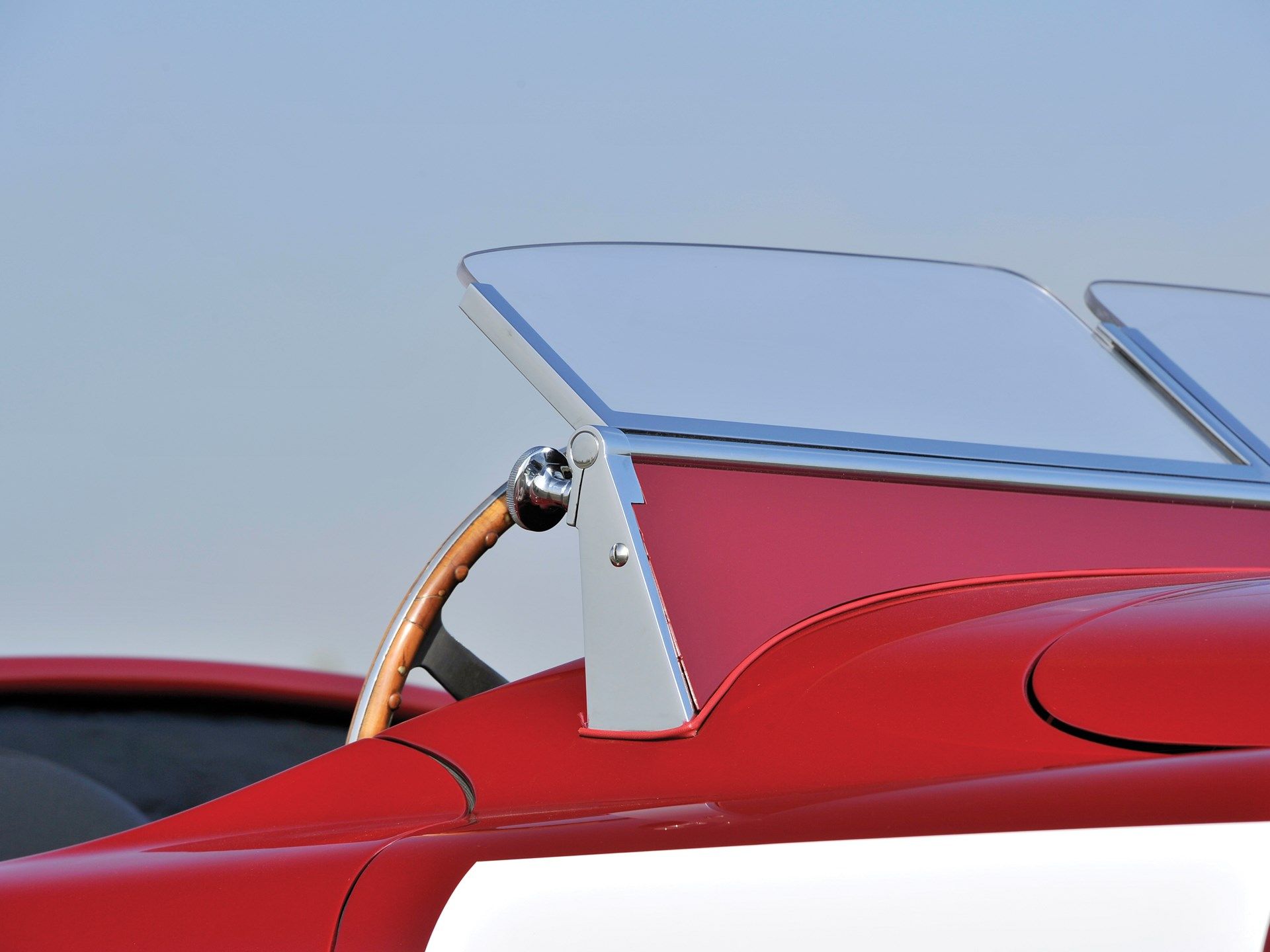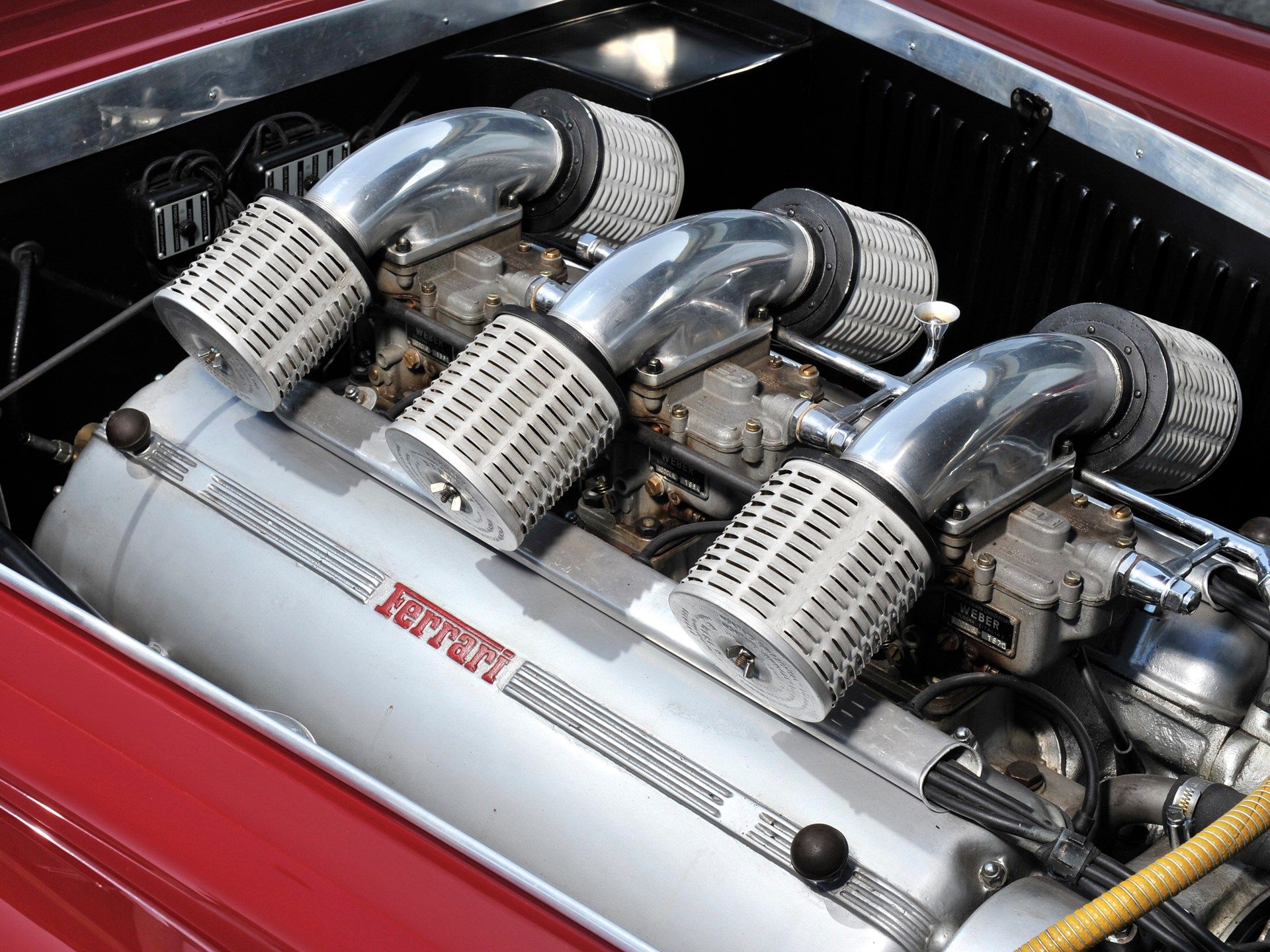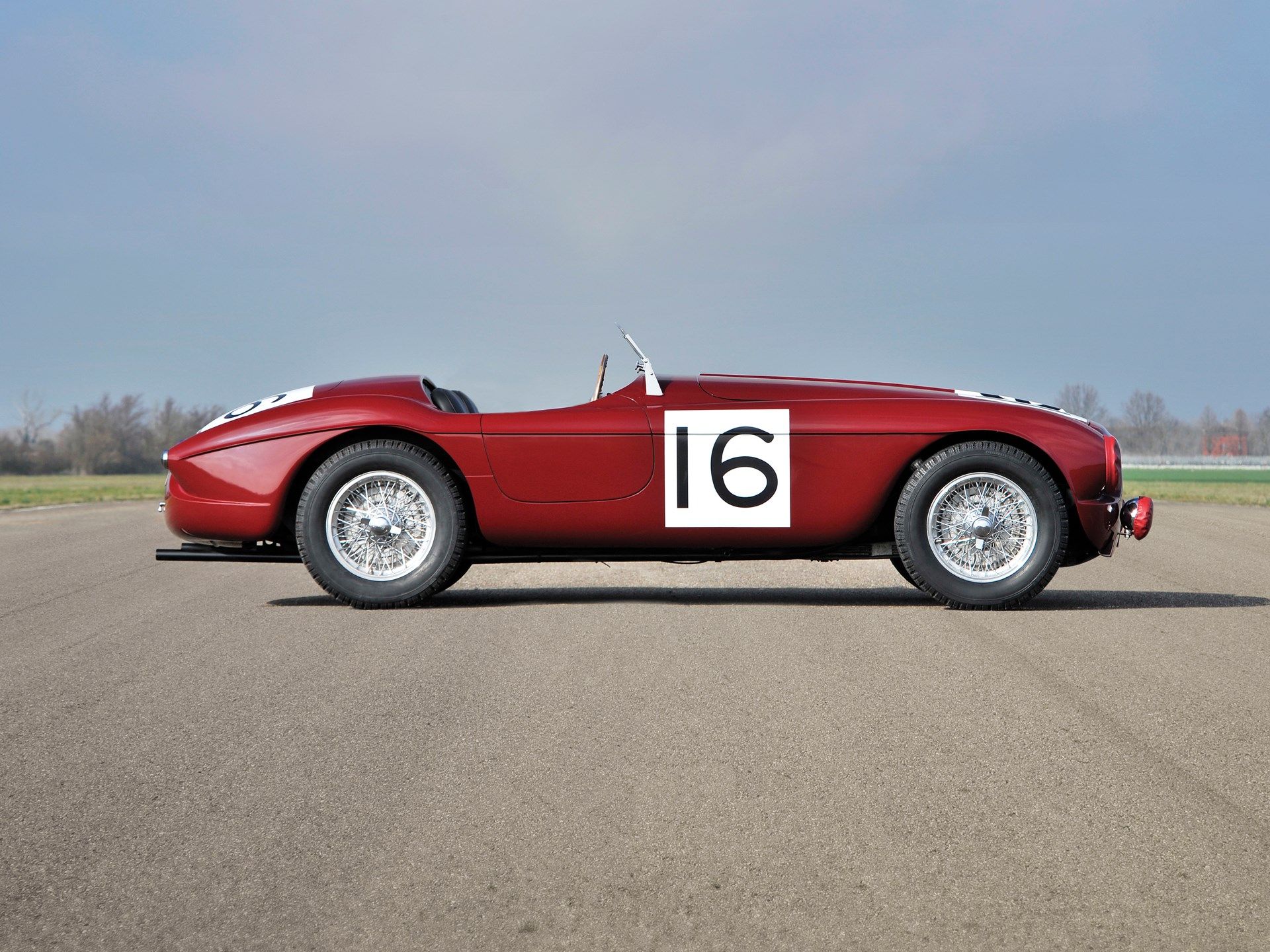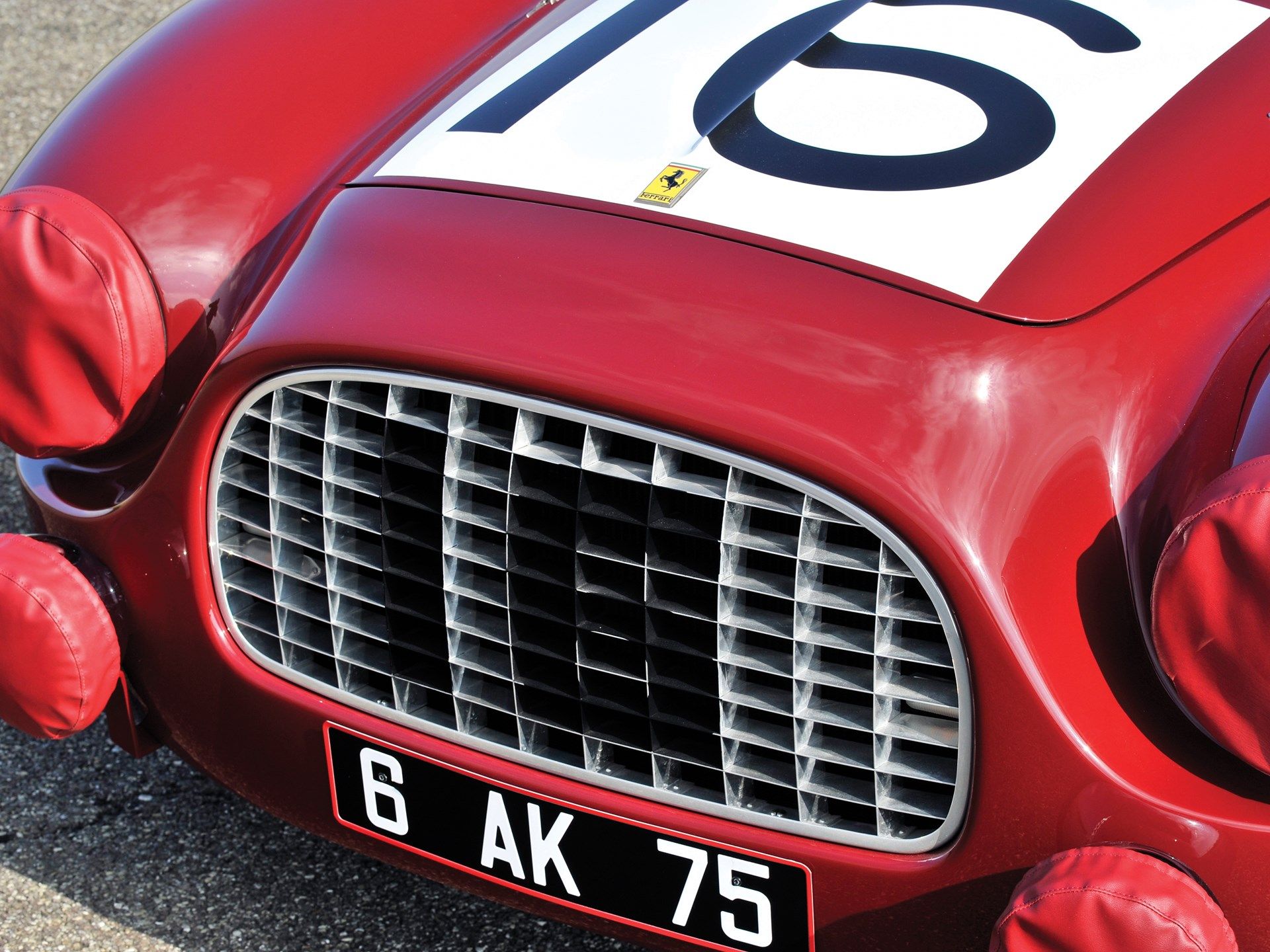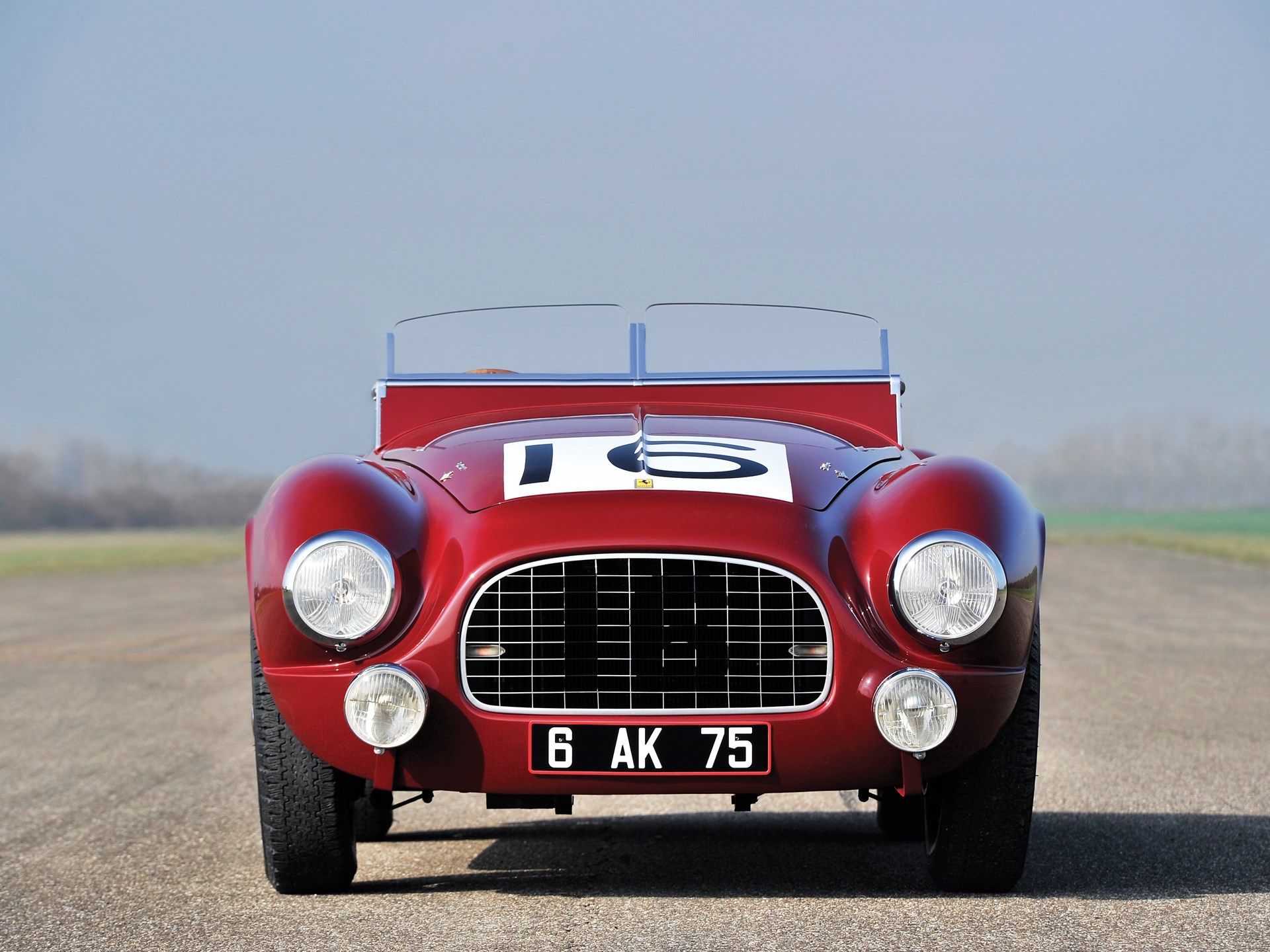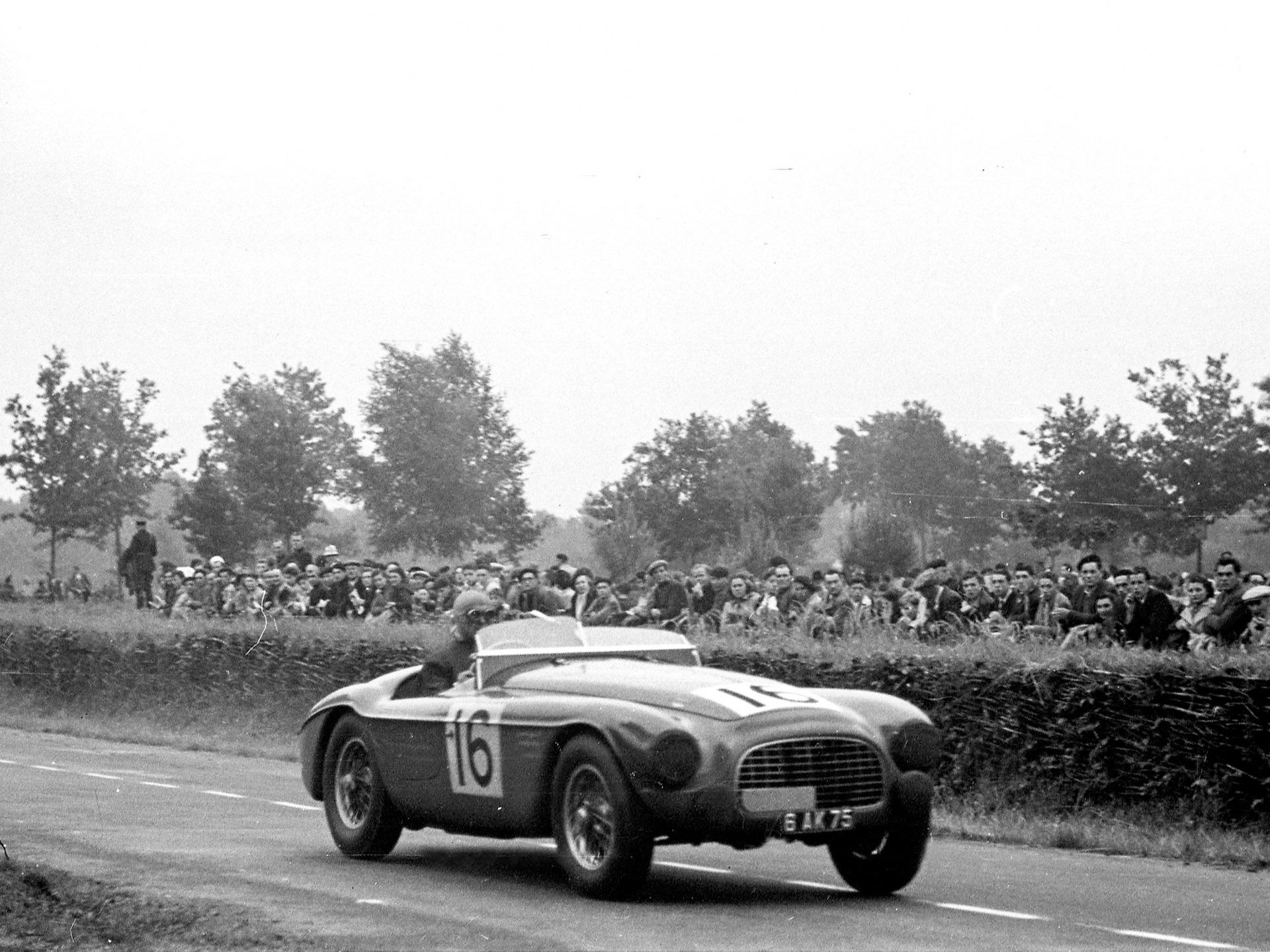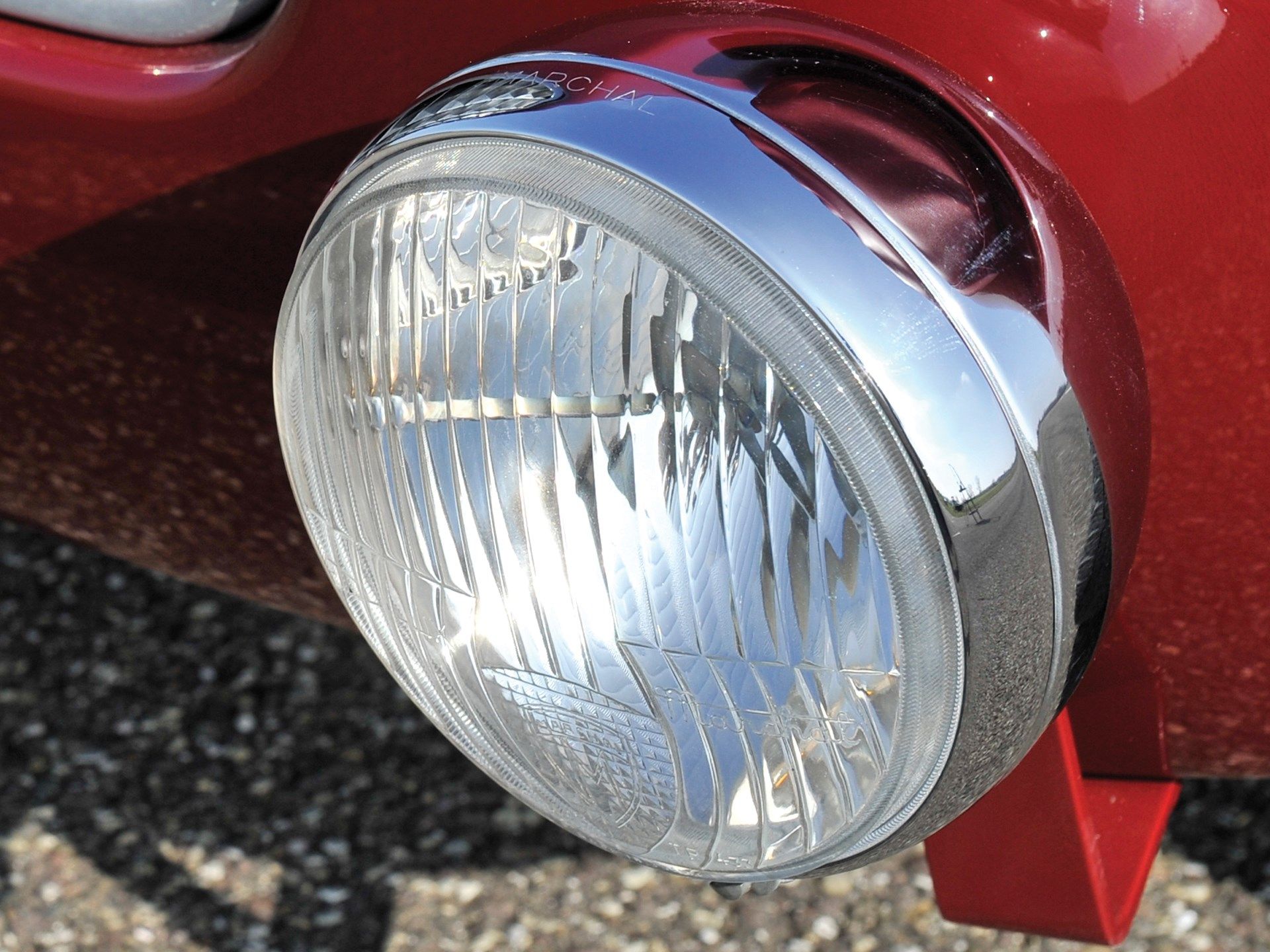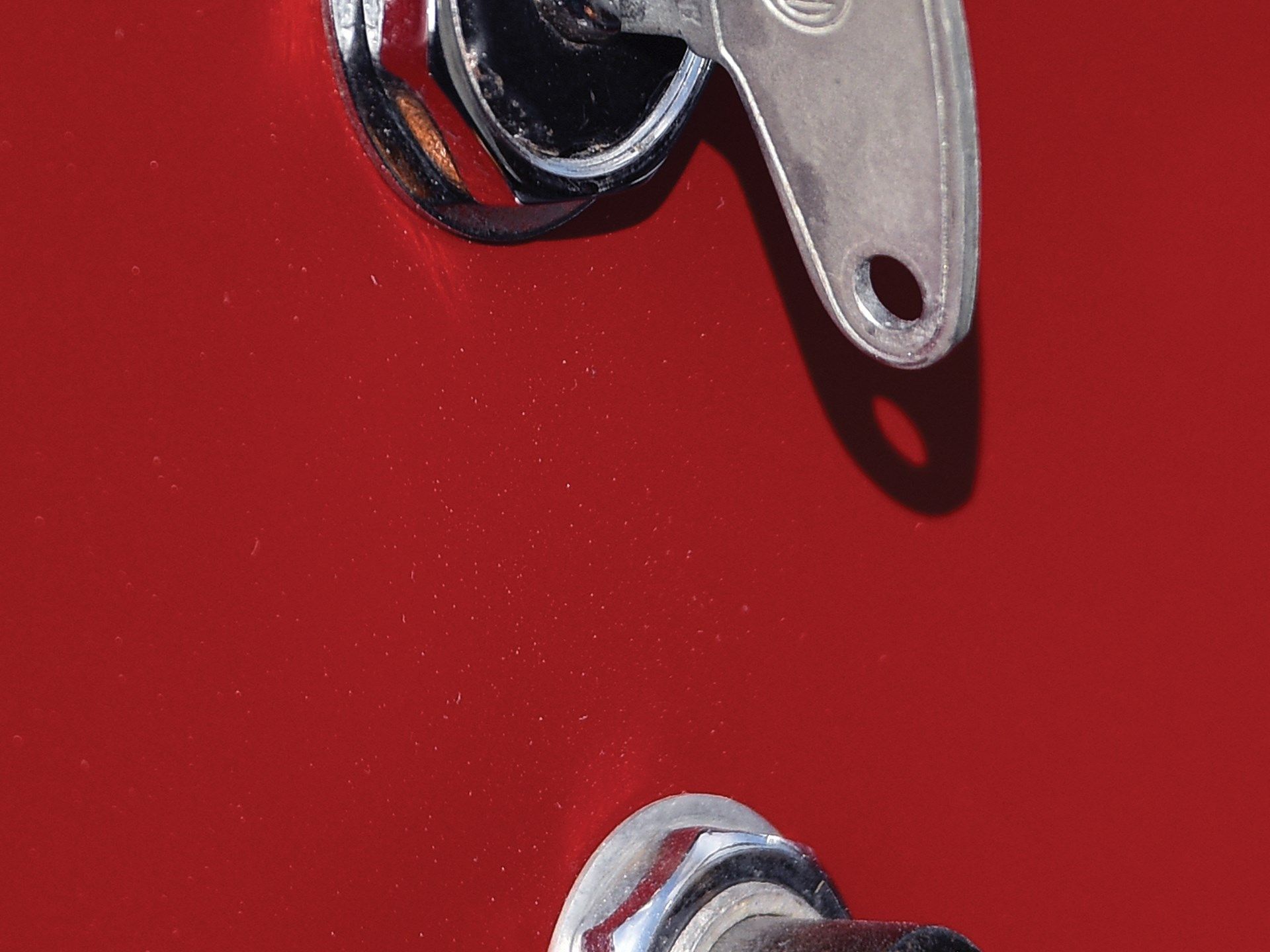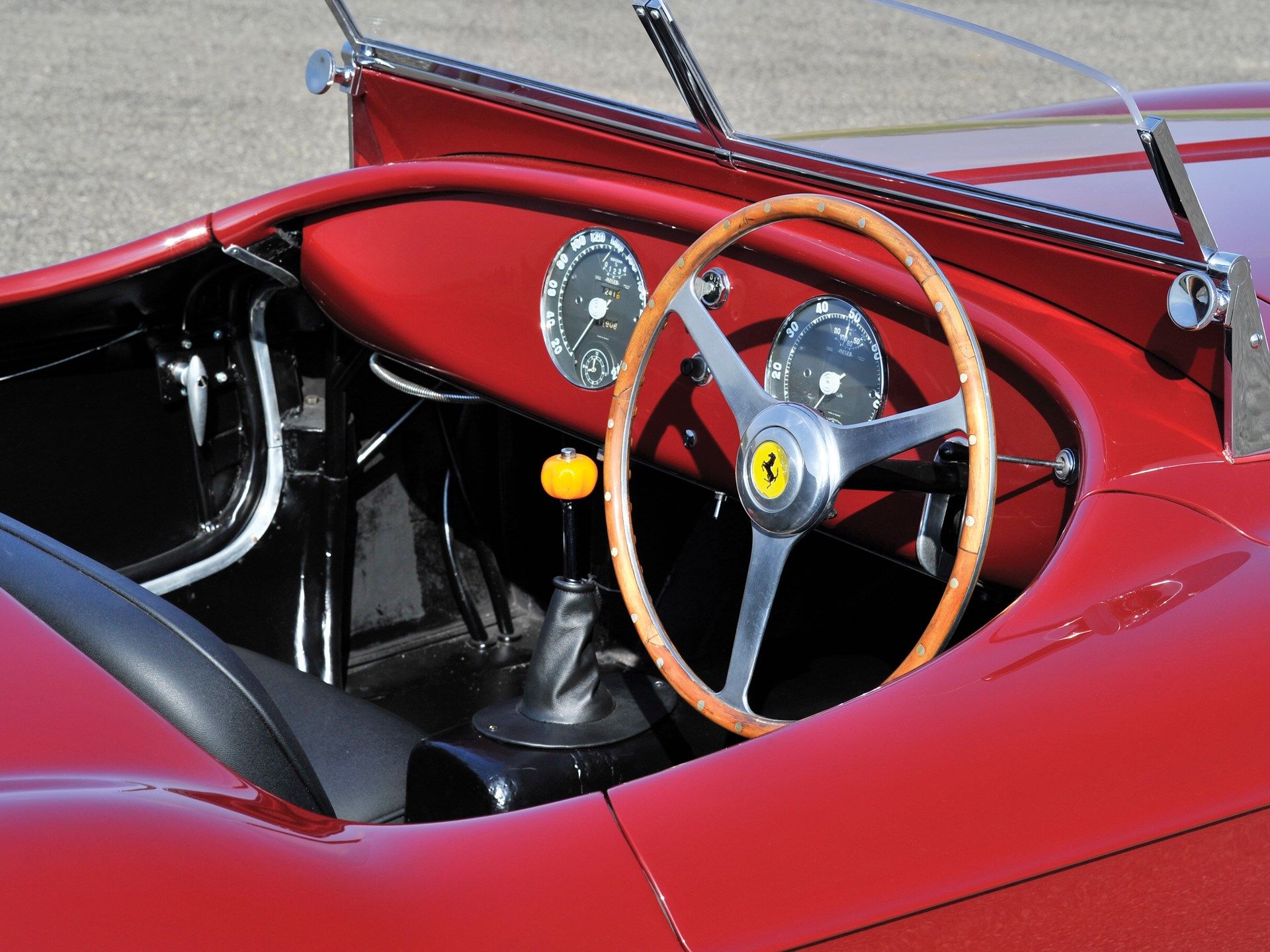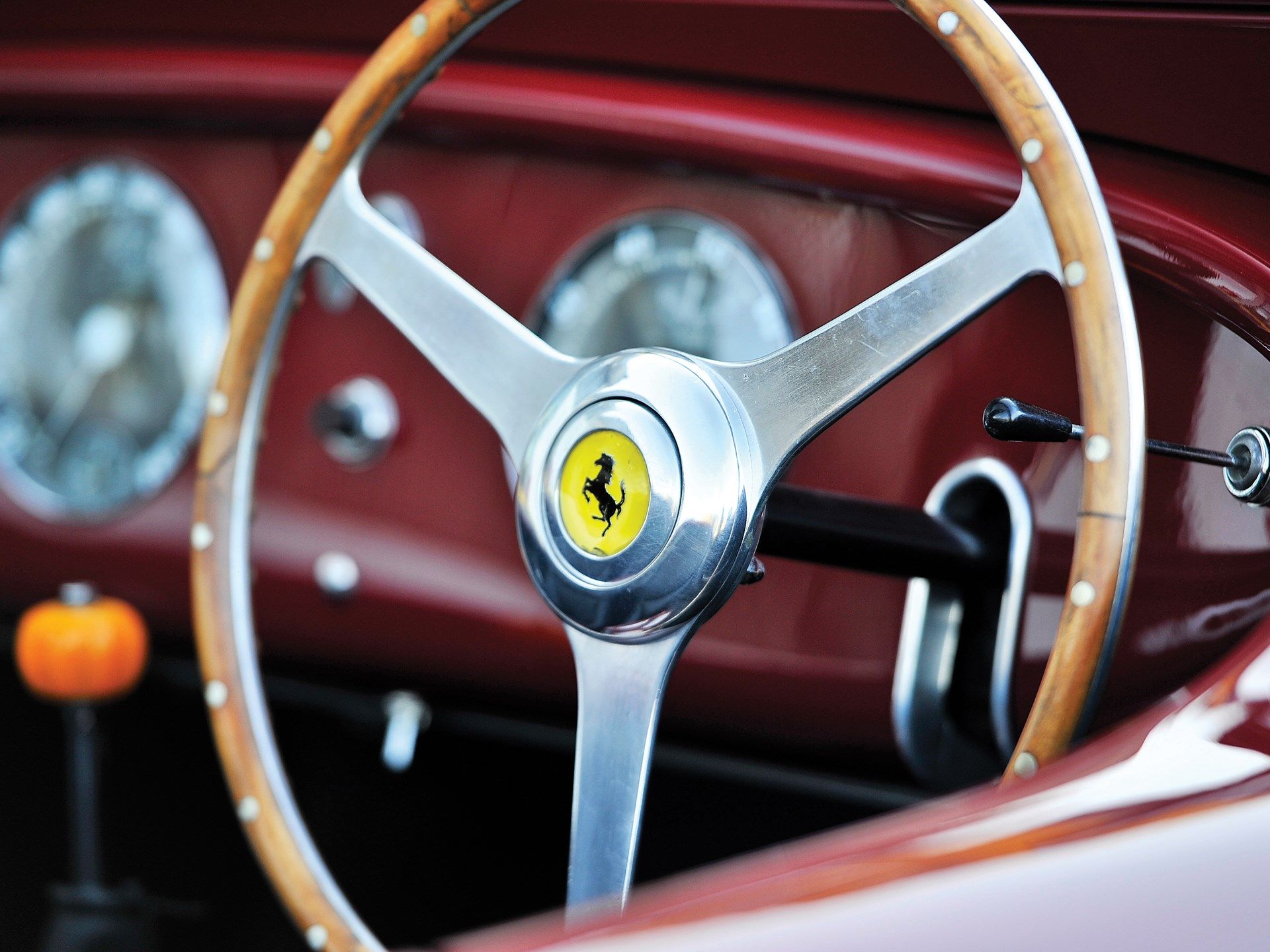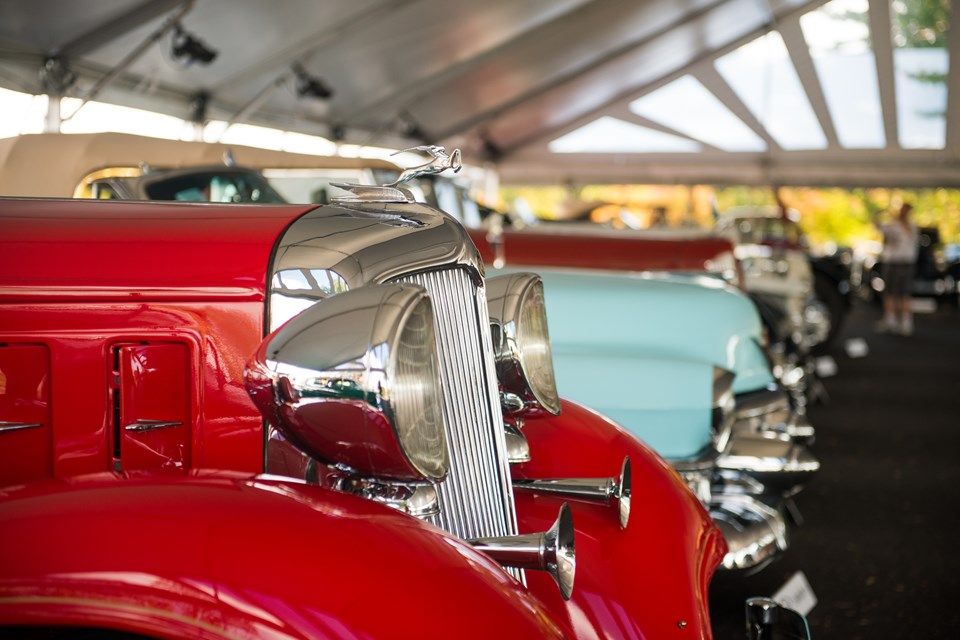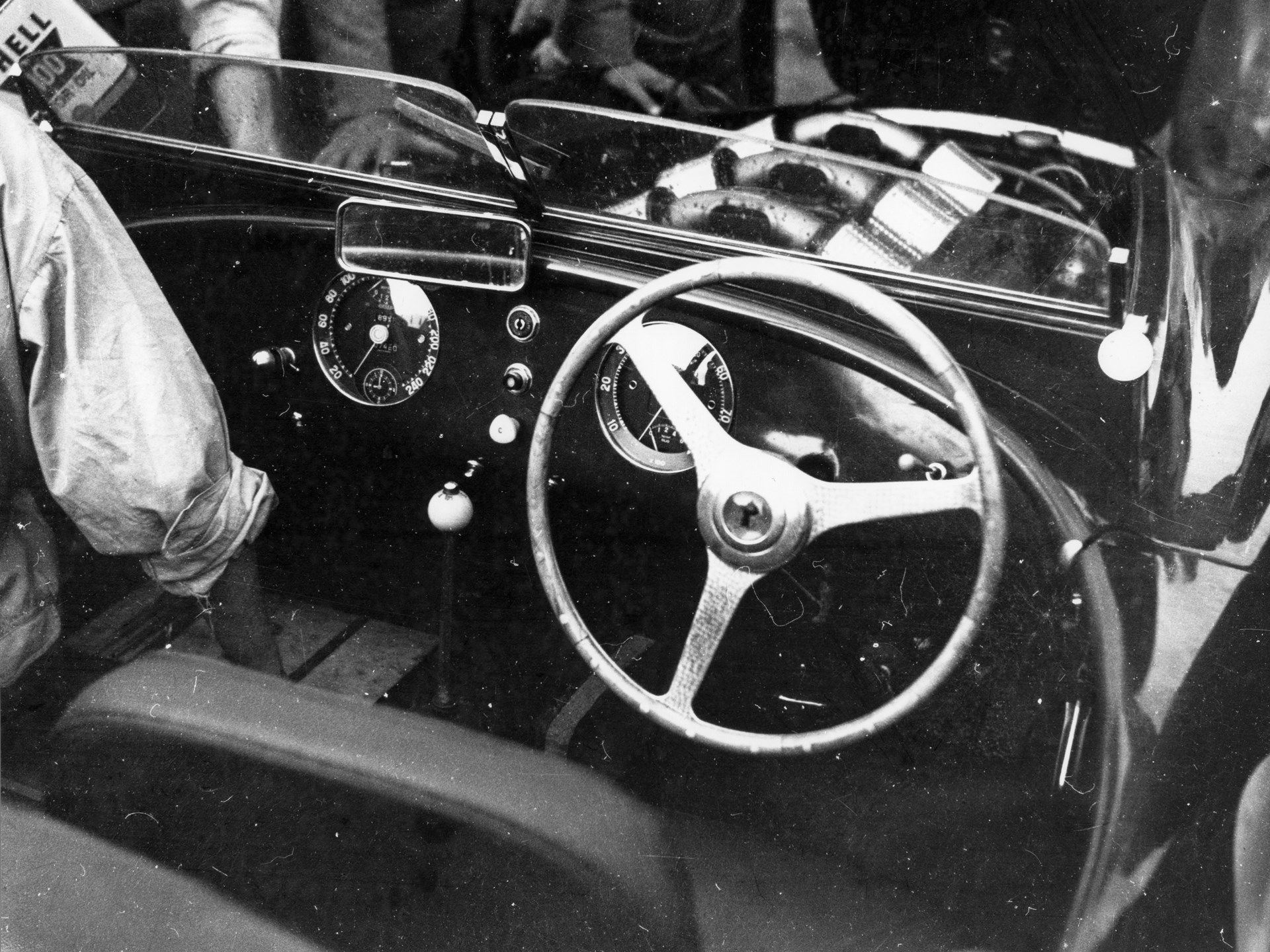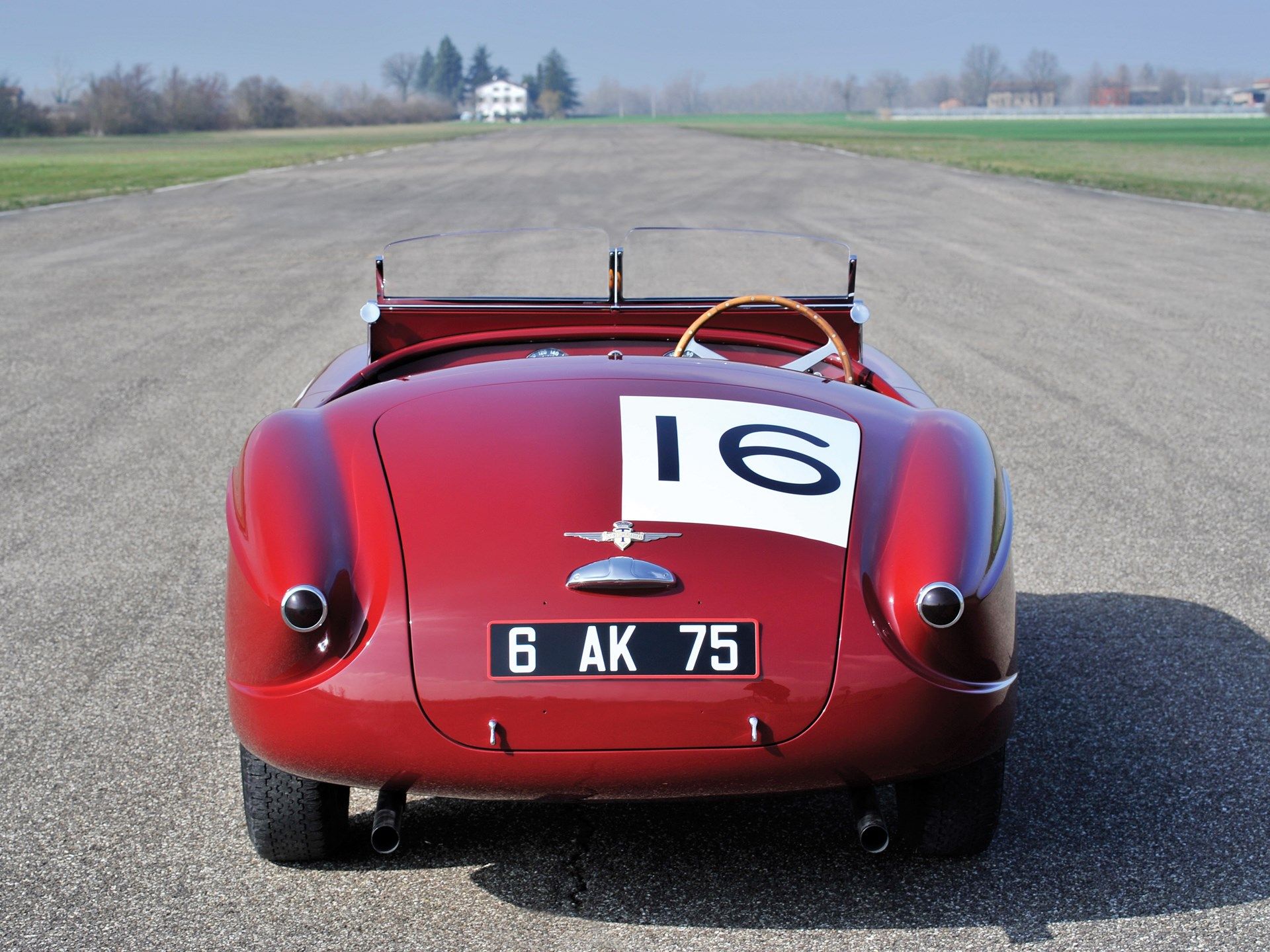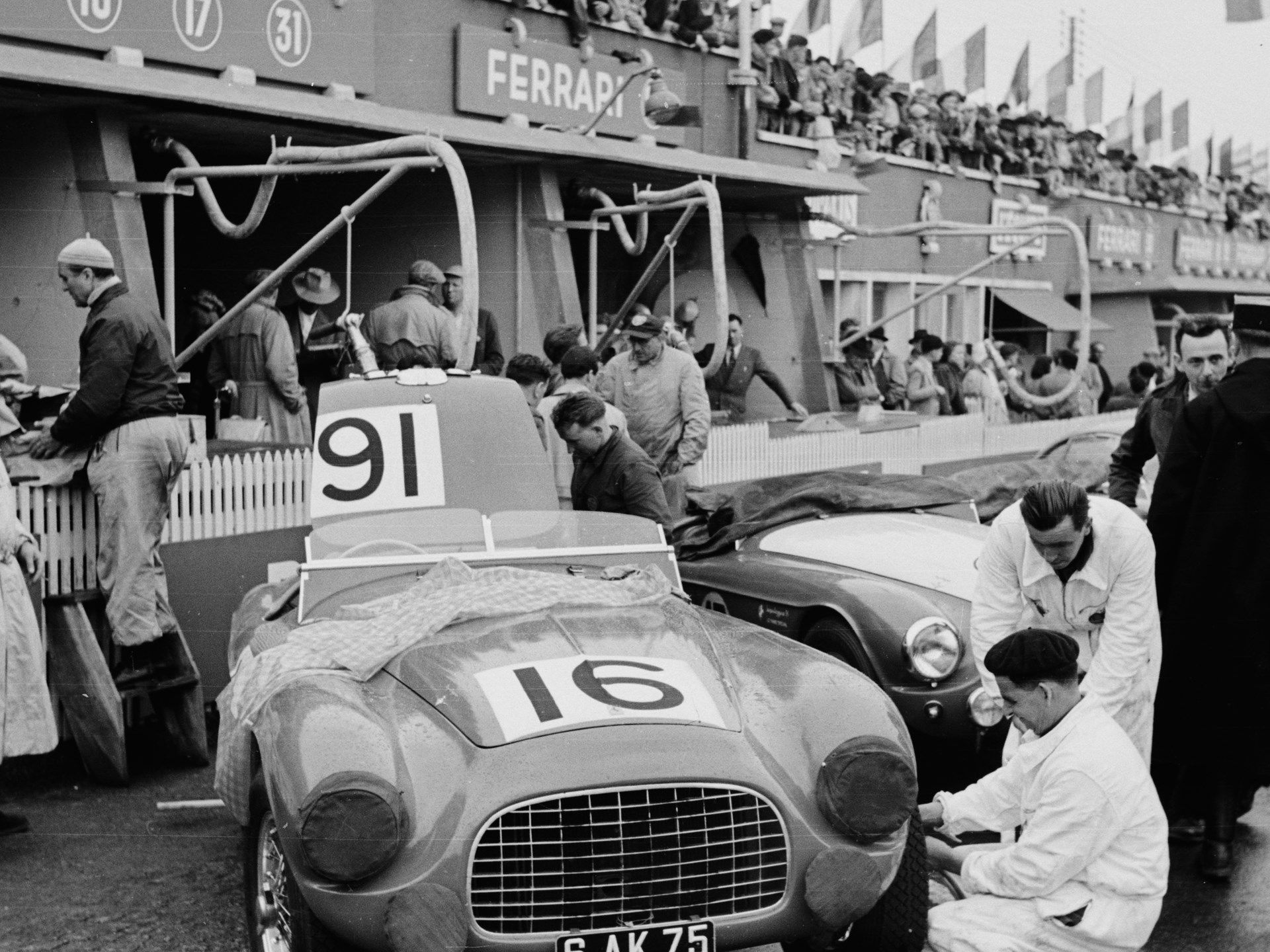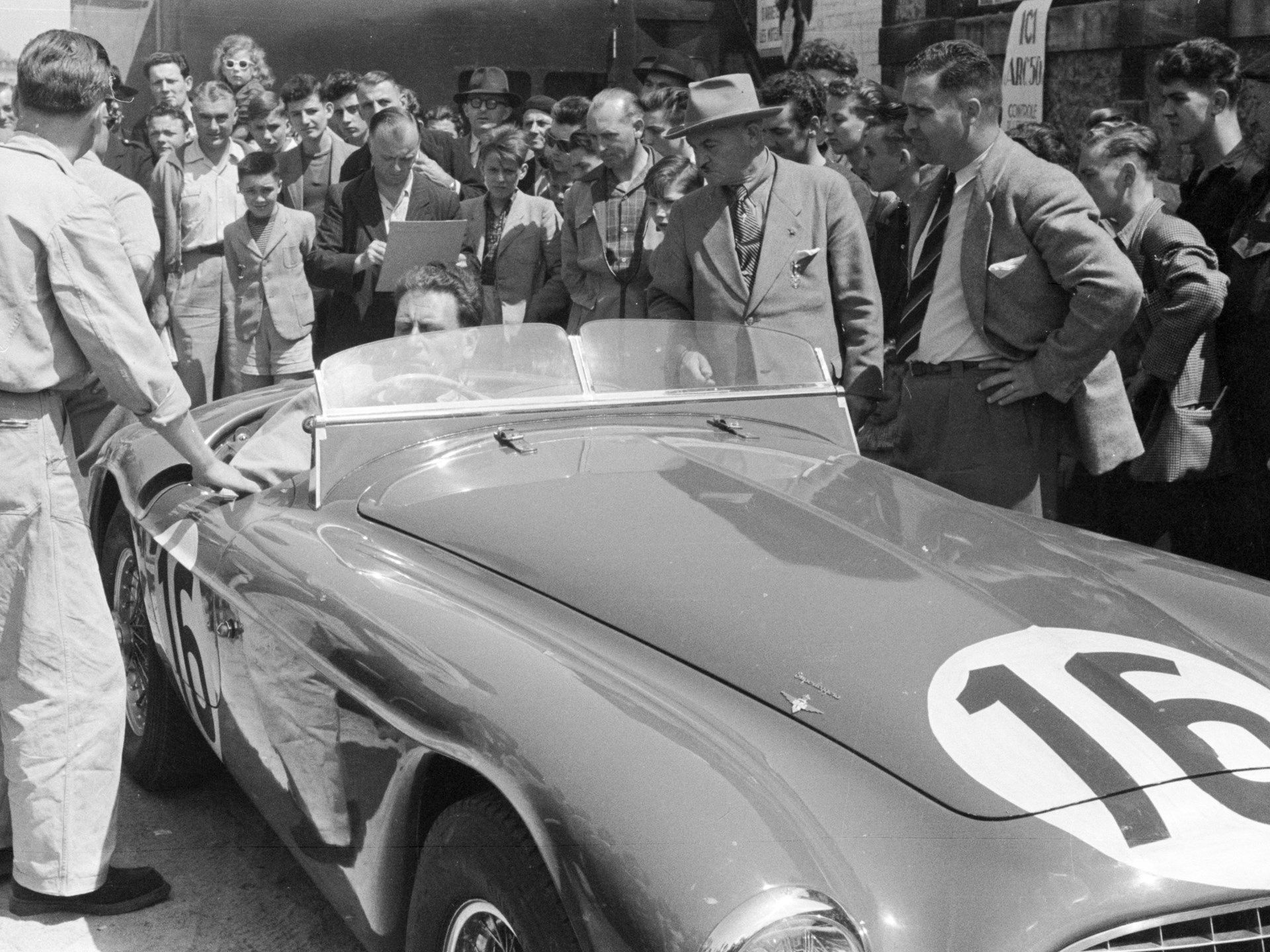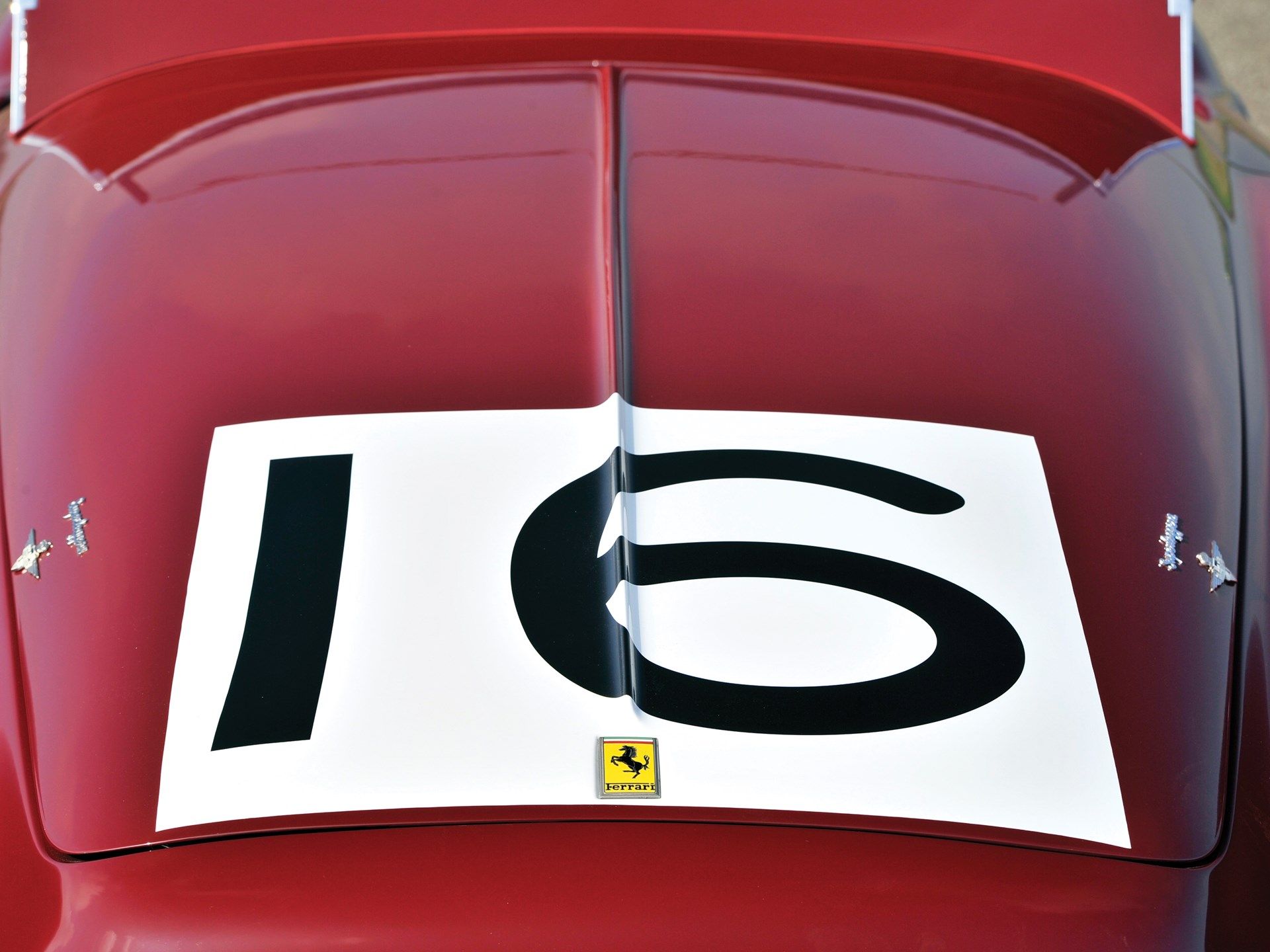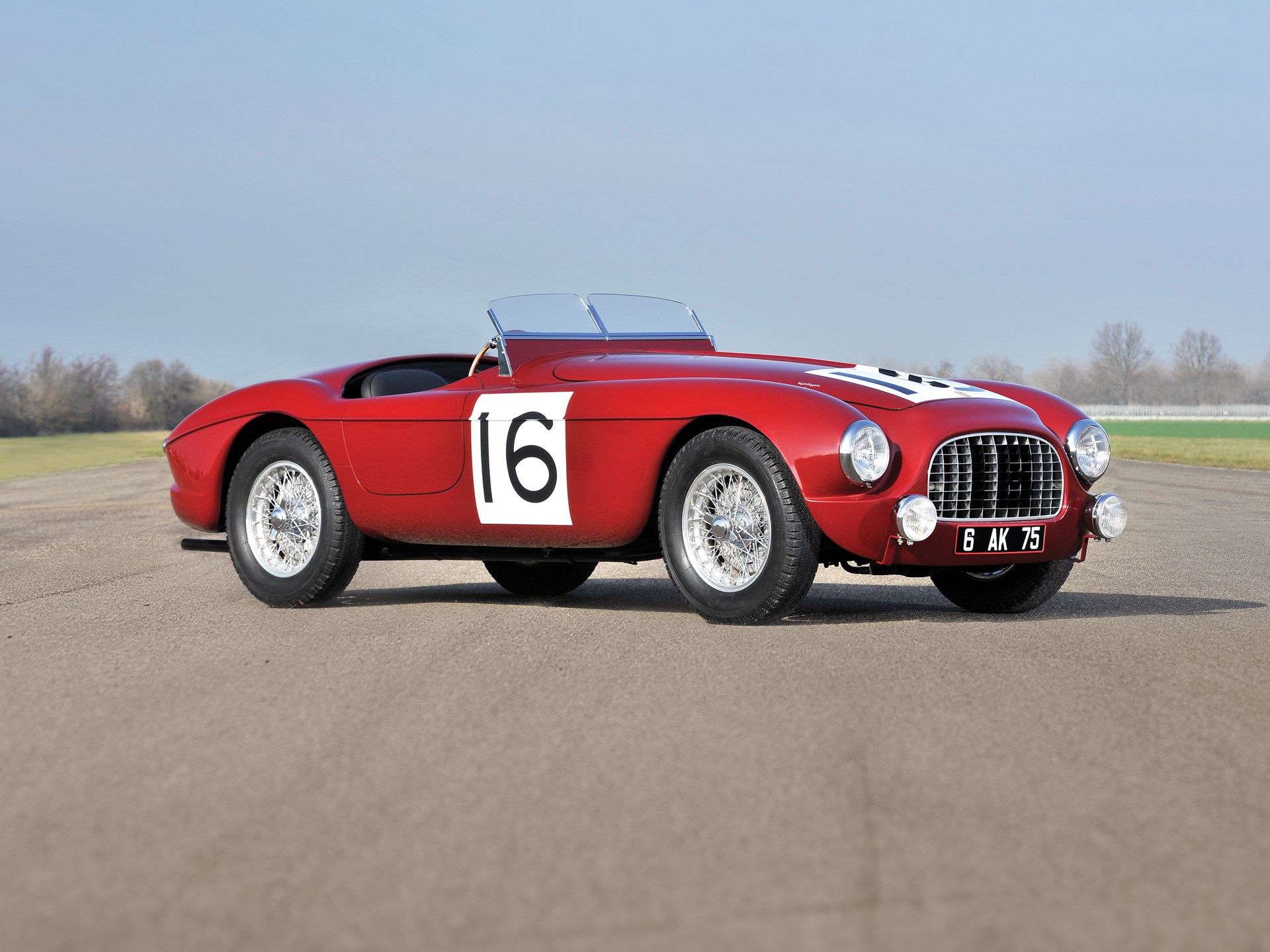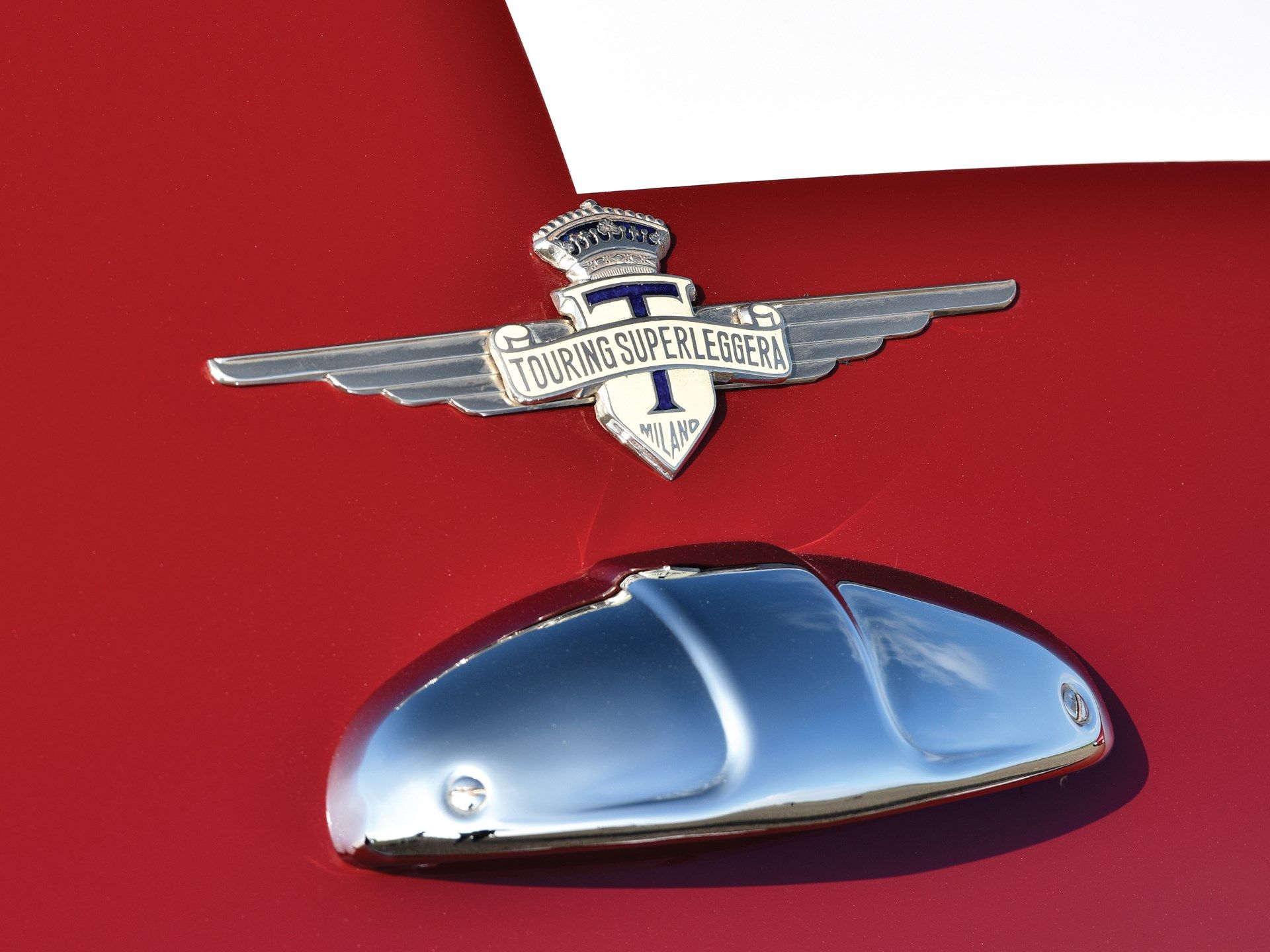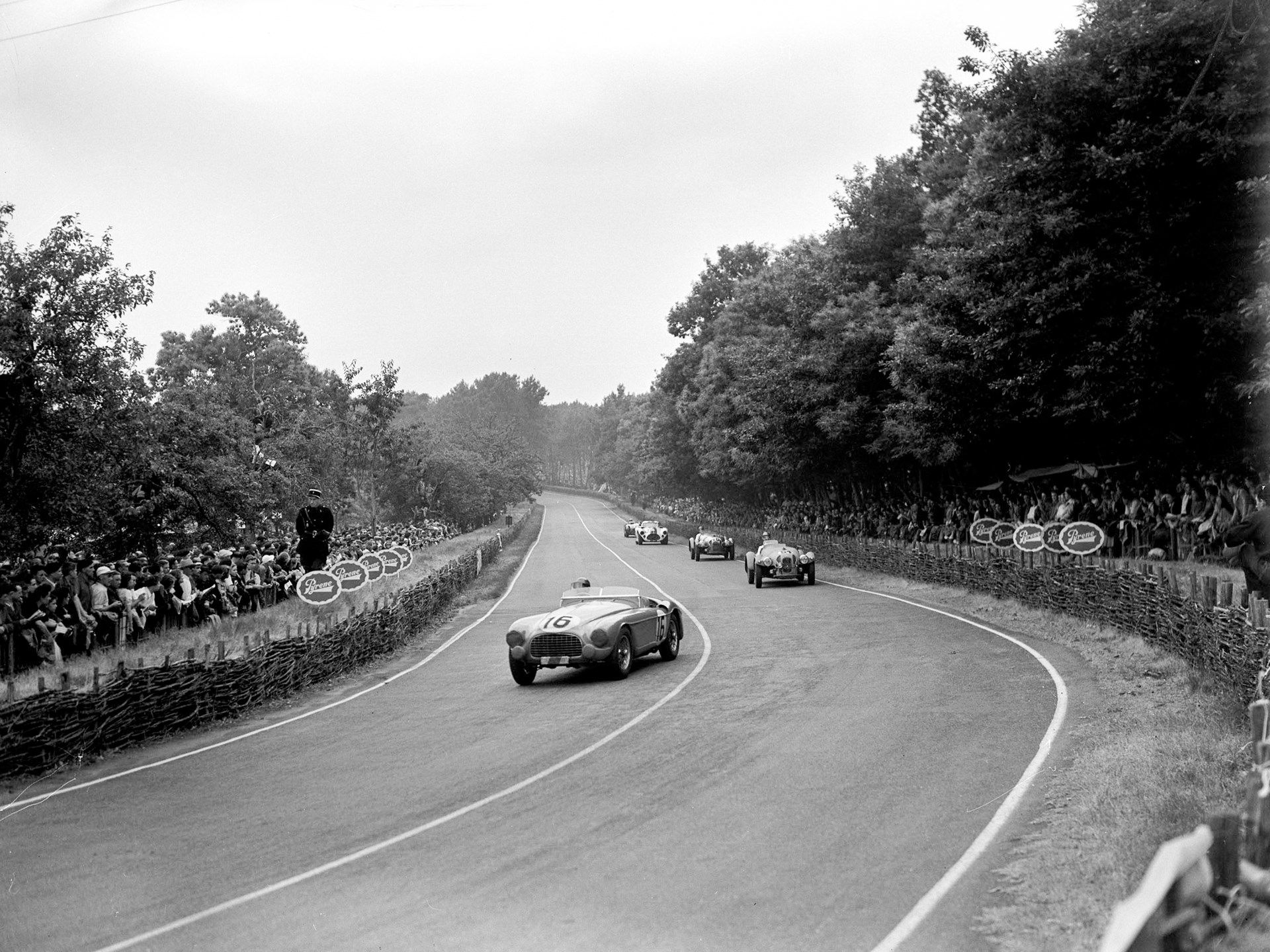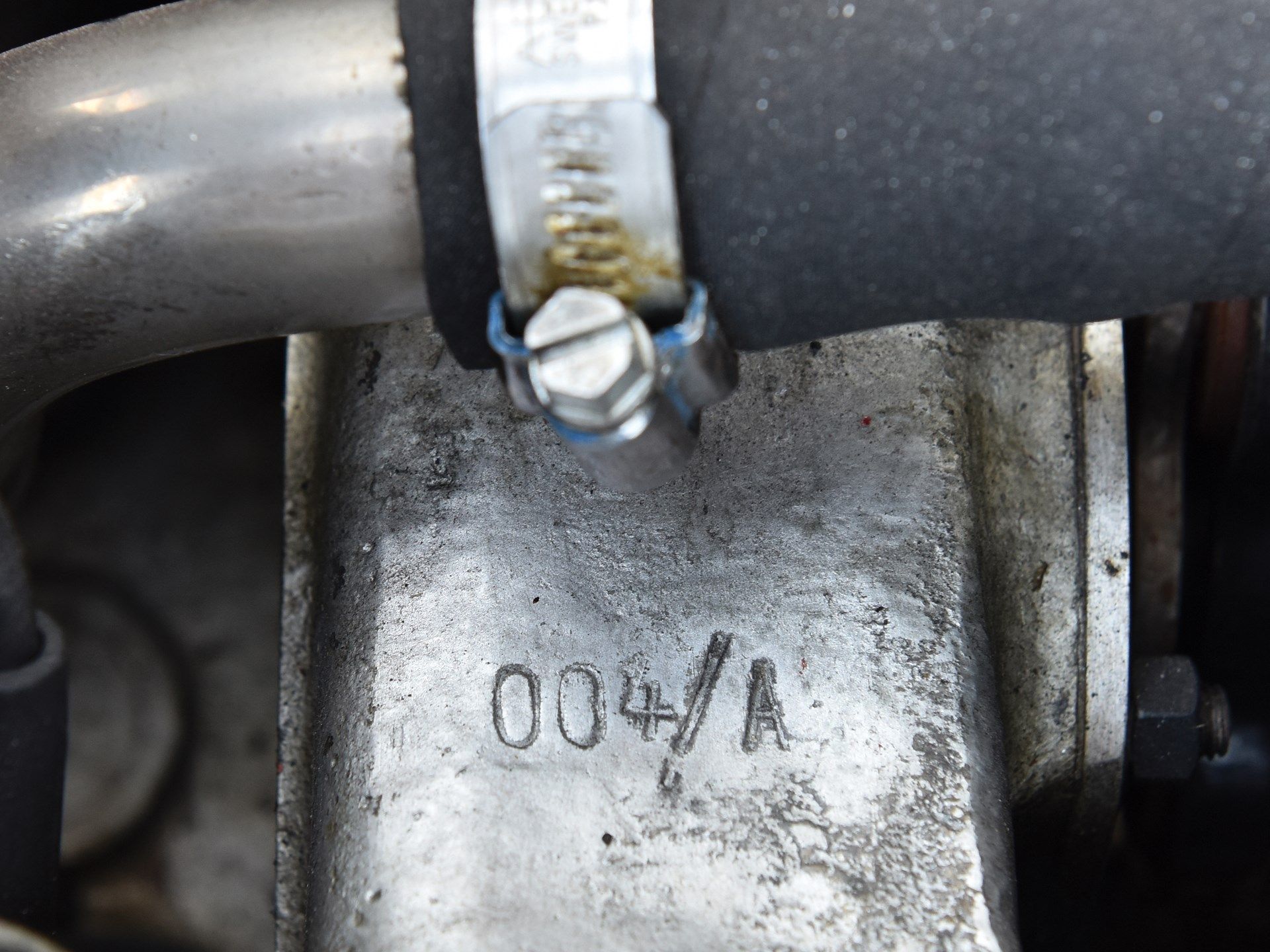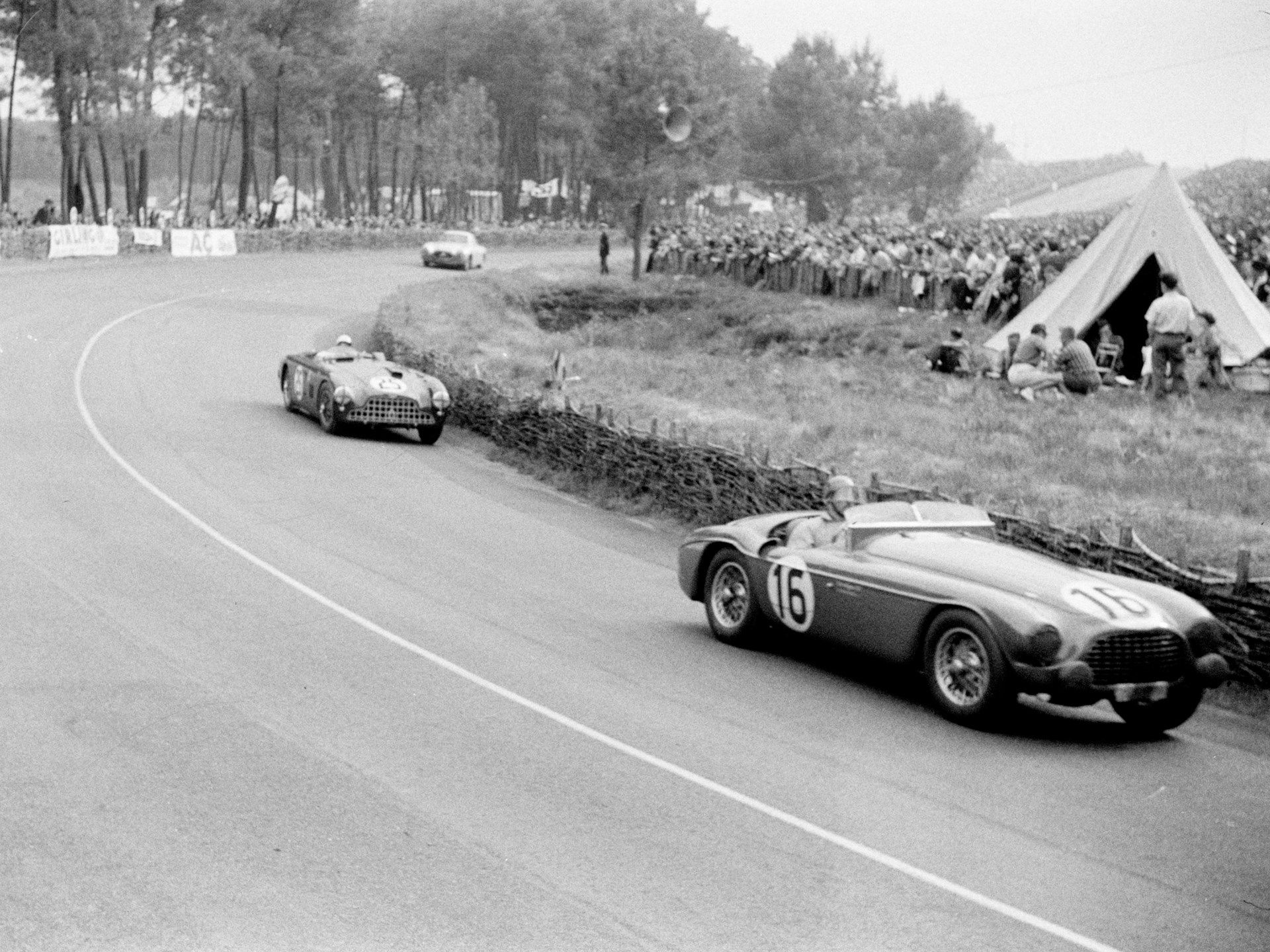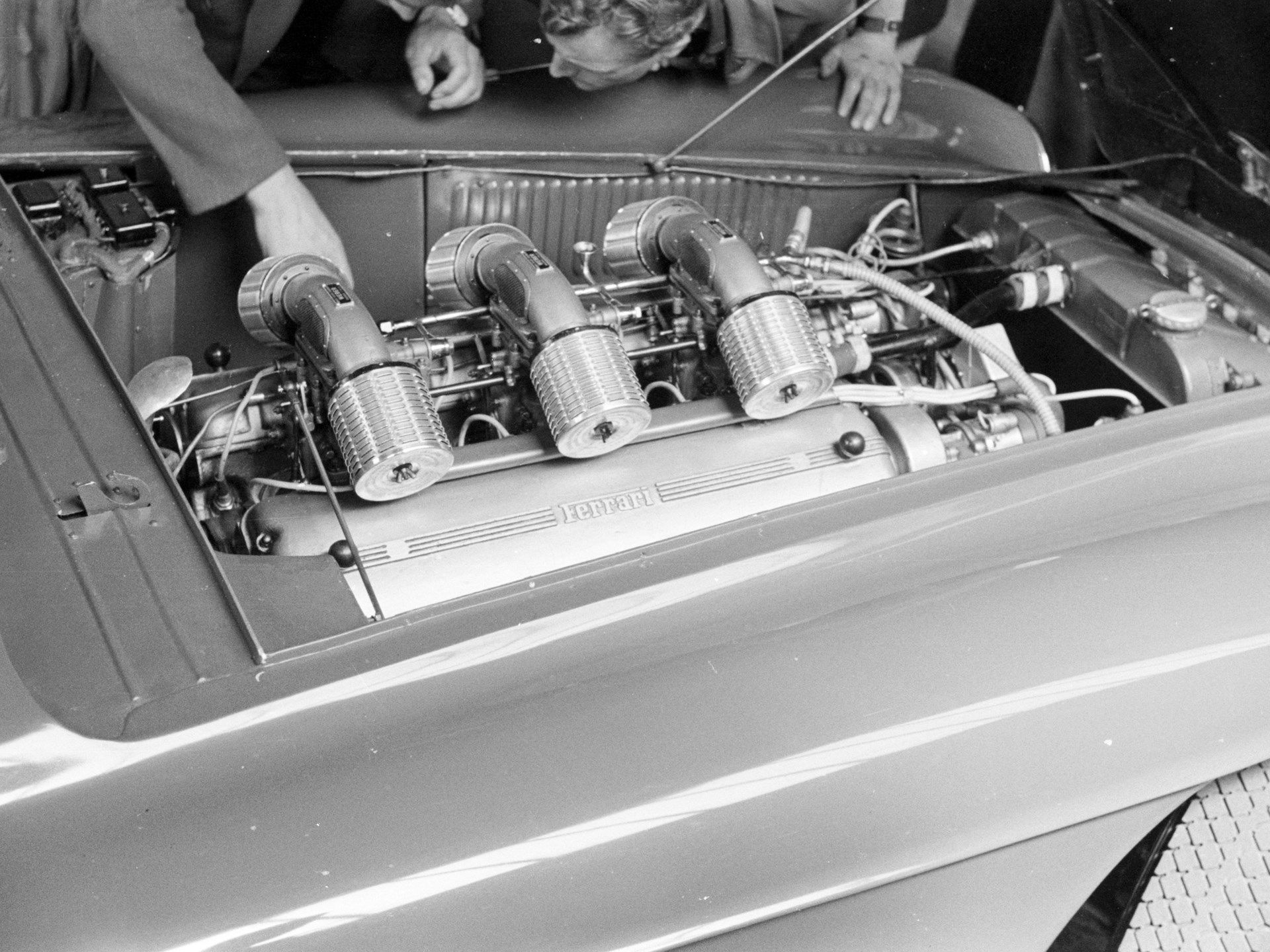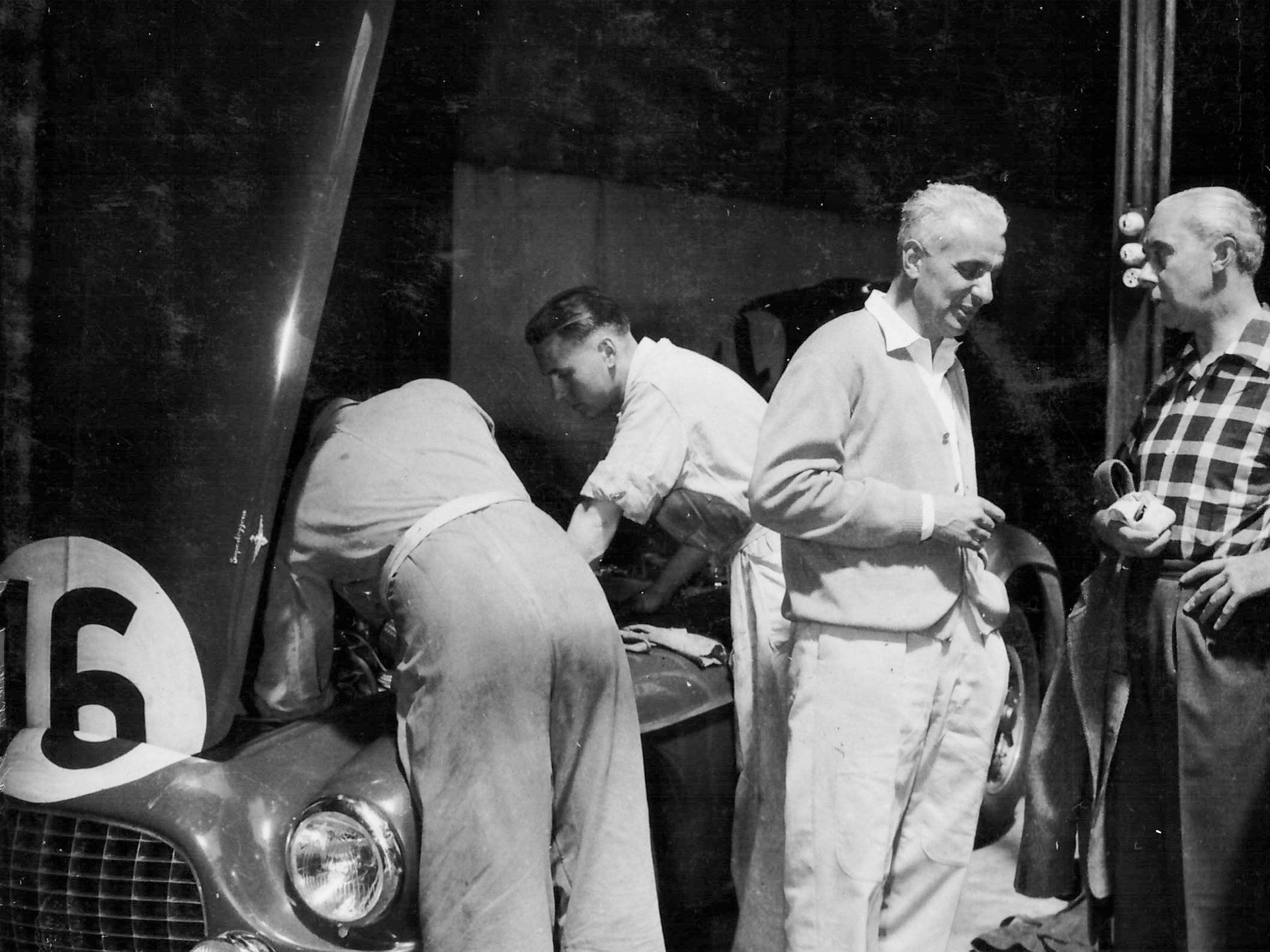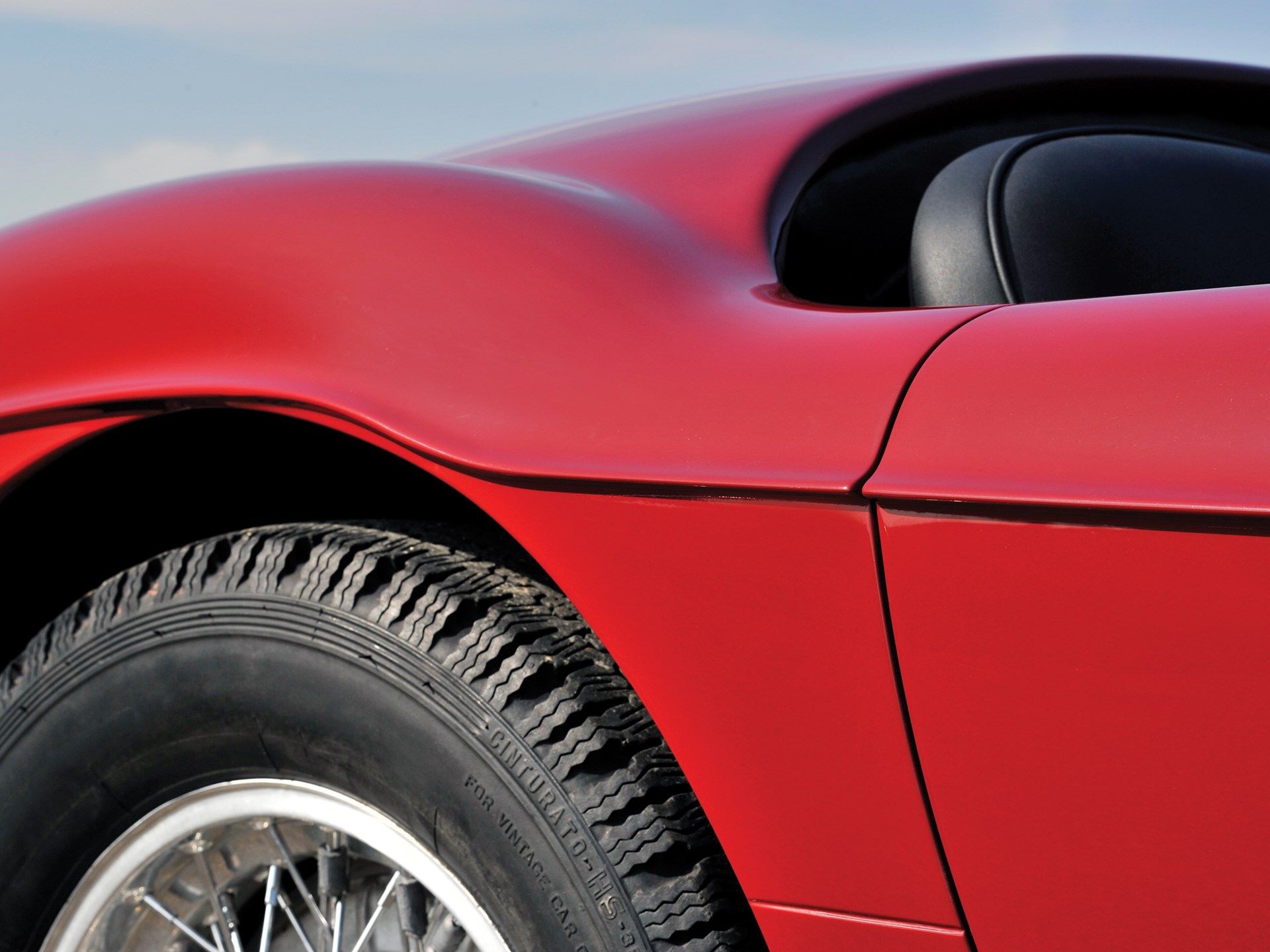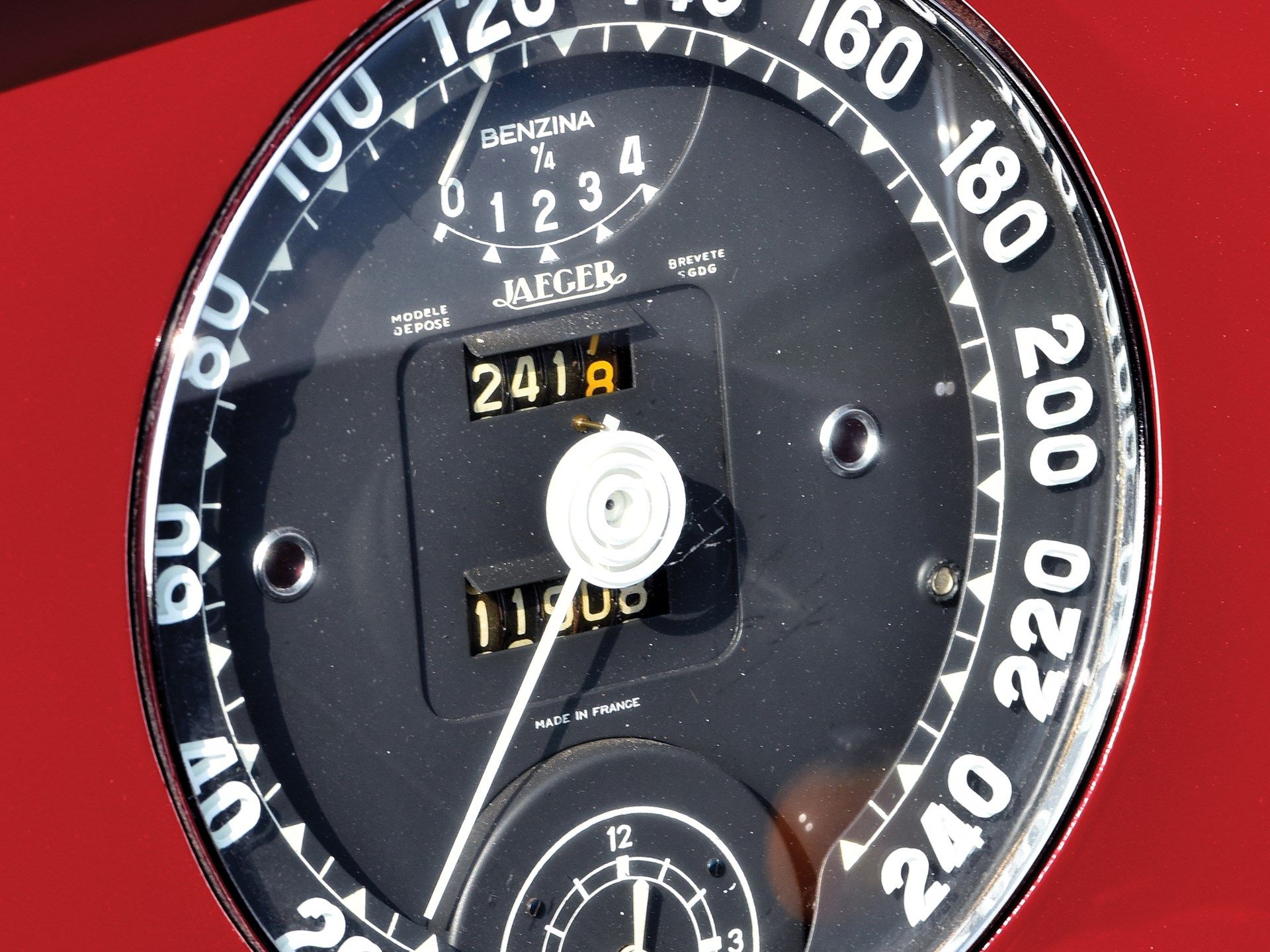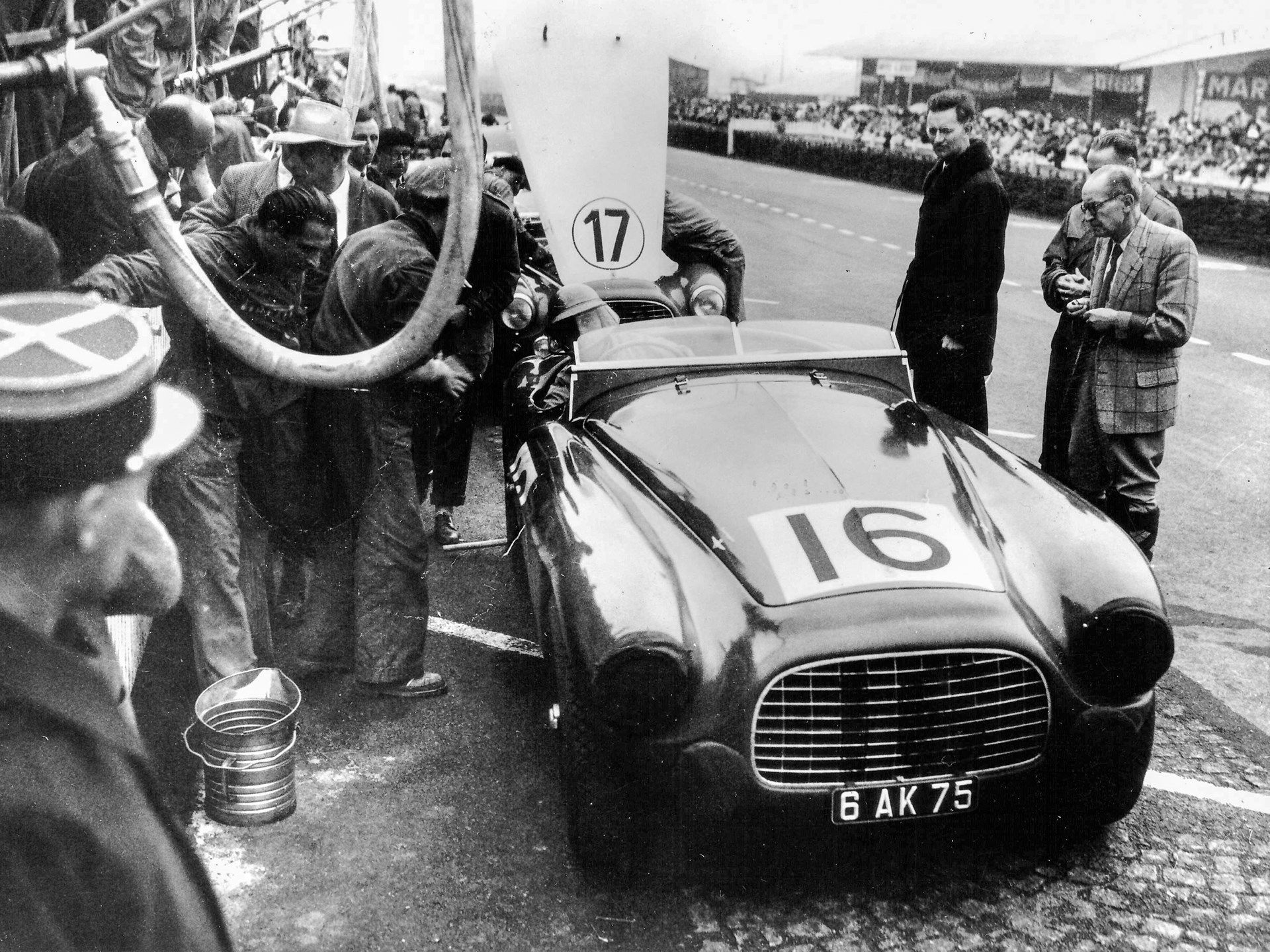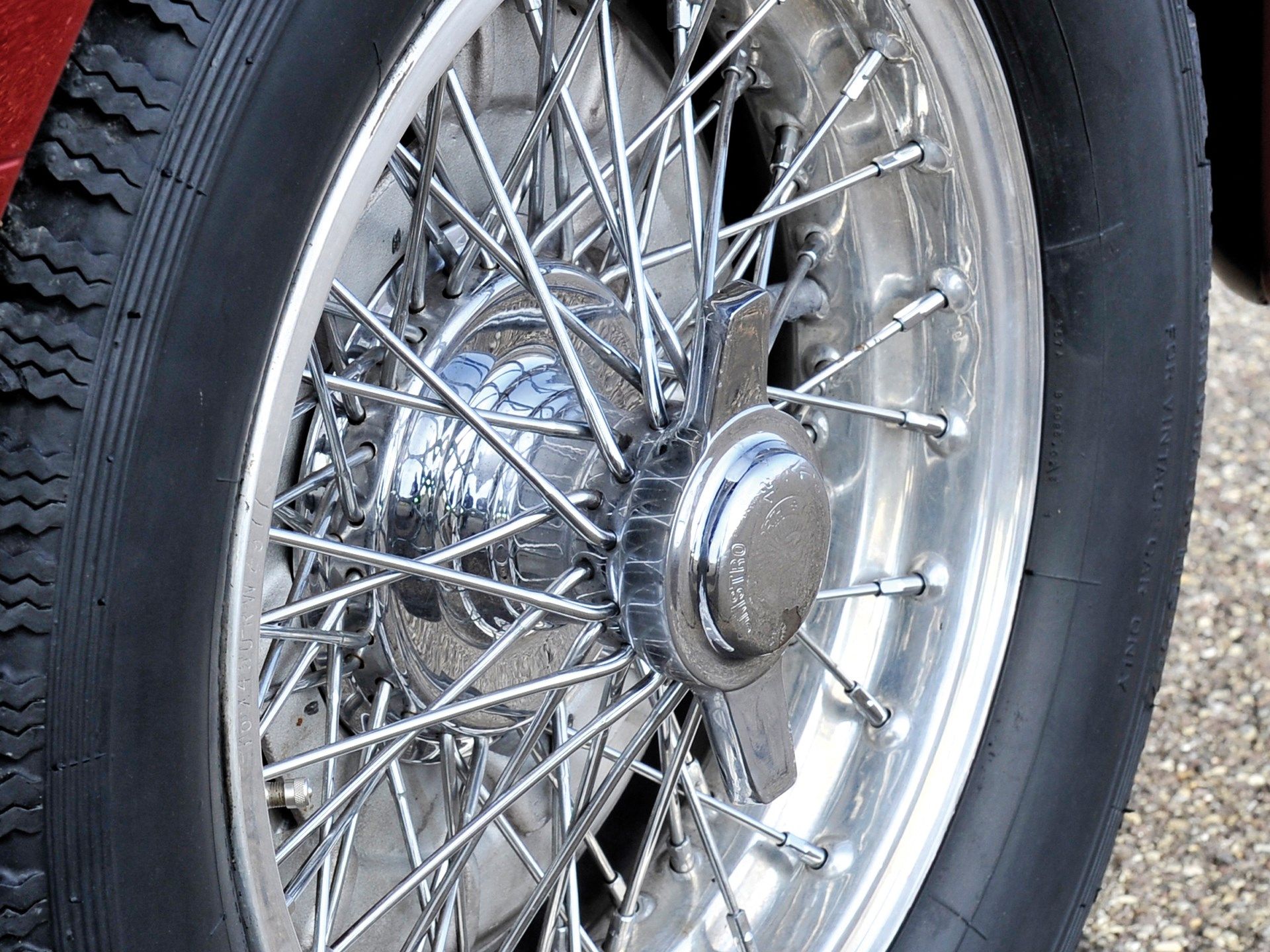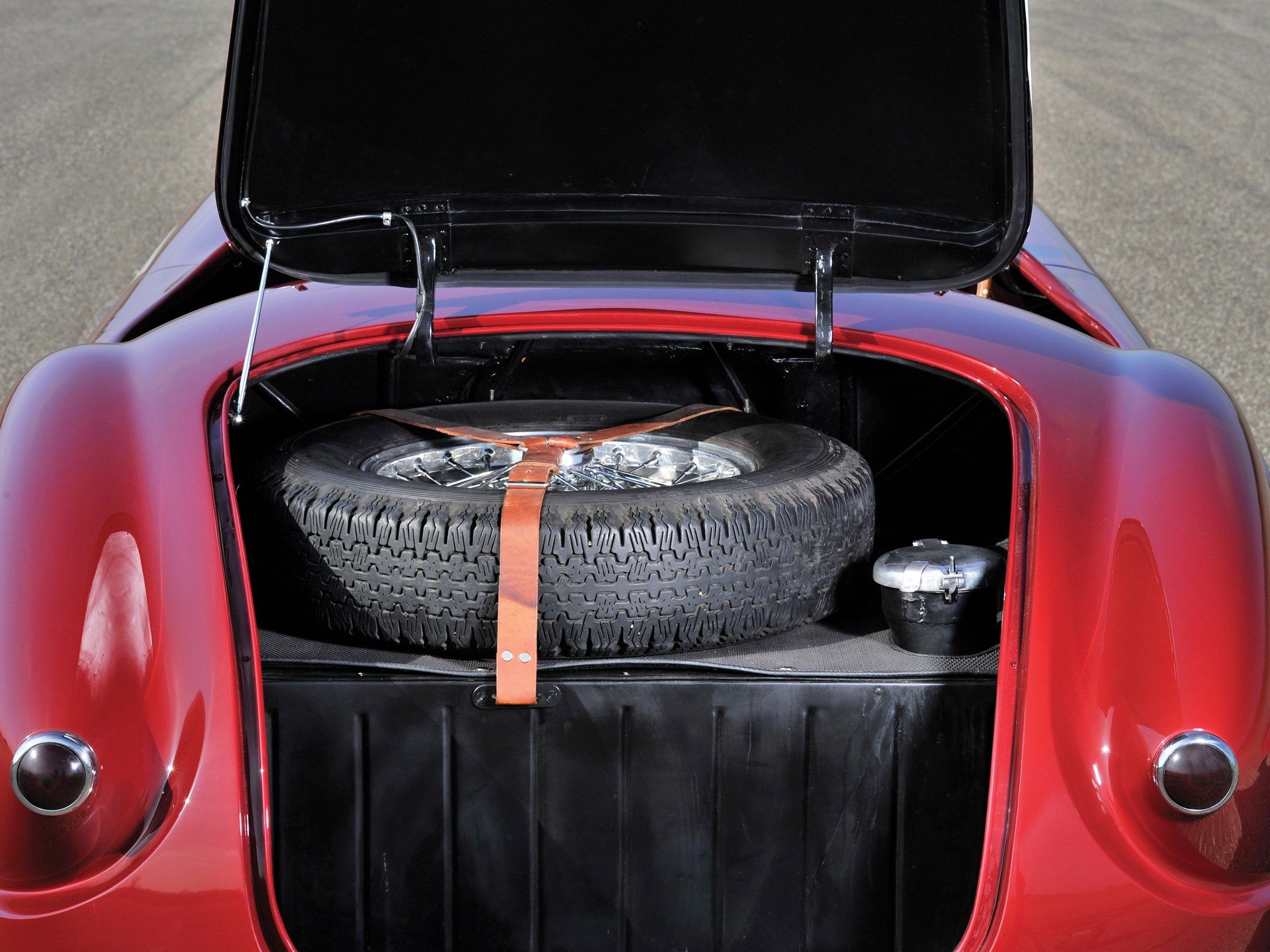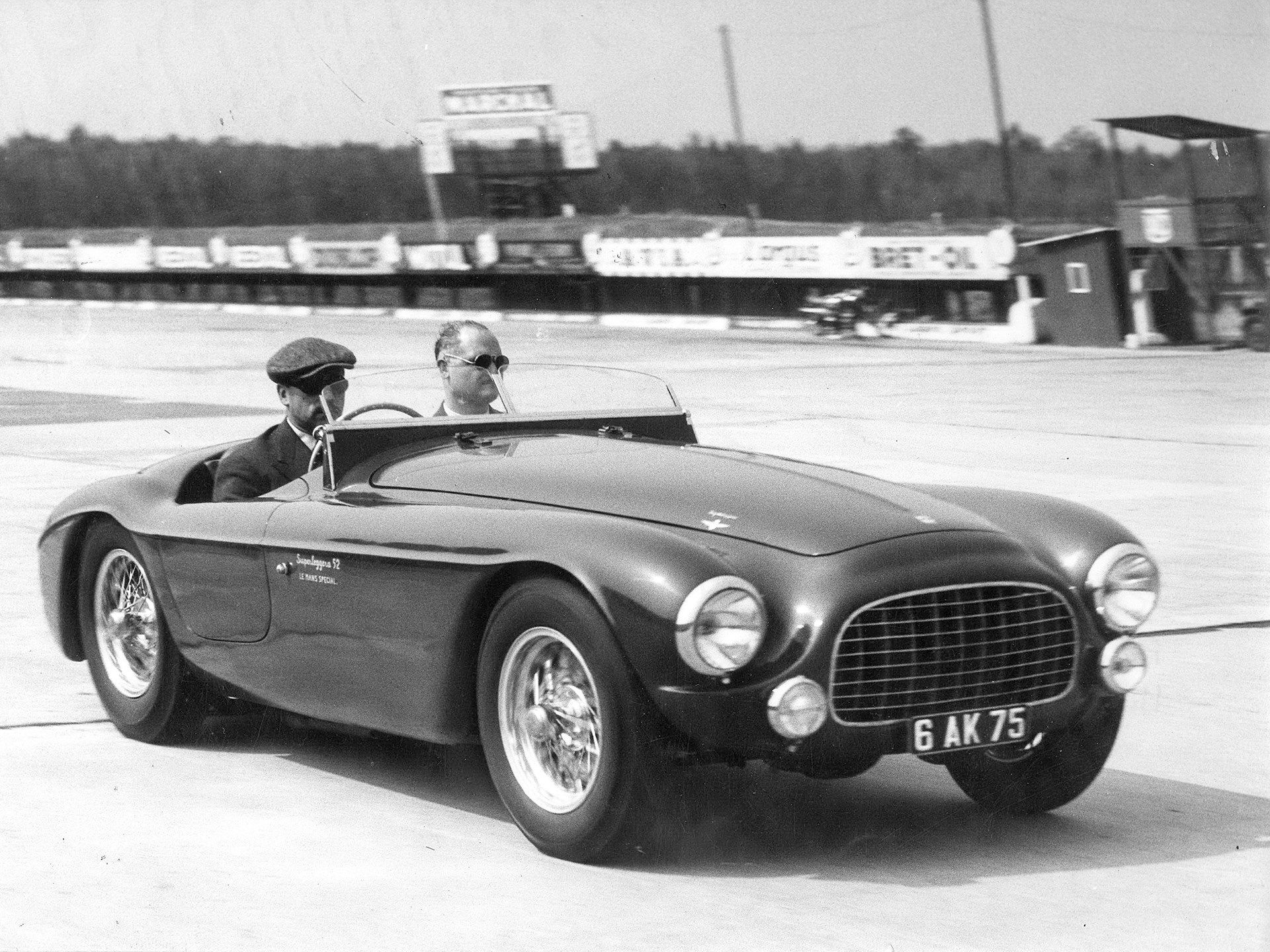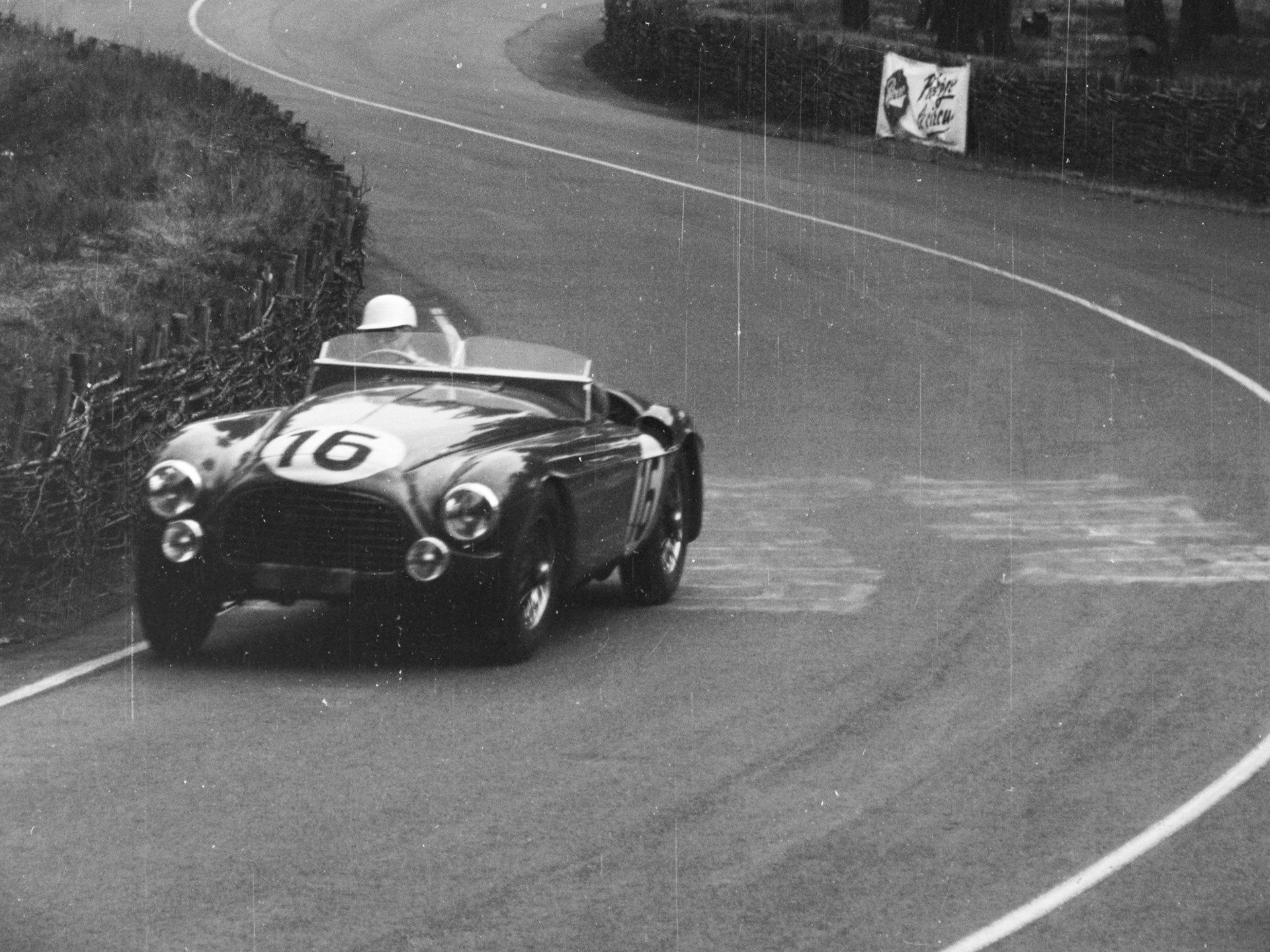The Ferrari 340 America was the first model in the America series conceived with export in mind, used as a means to increase Ferrari's footprint in the United States. The 340 featured a brand-new Lampredi V-12 which made its way to Formula 1, with this particular car racing at Le Mans twice in the early '50s.
The Ferrari America series was launched at the dawn of the '50s to appeal to American customers who wanted less rugged interior premises, bigger engines, and more performance. The first car of this lineage was the 340 America, which debuted at the 1950 Paris Motor Show in full racing trim. Granted, most Ferraris back then were as much race cars as they were road cars, but a customer could personalize his car to be more friendly on the road with softer suspension, different gearbox ratios, or new engine settings.
As this is a Ferrari from the early days of the company, it was made in very few numbers, on order from importers or customers. Barely 23 cars were completed between 1950 and 1952, with three coachbuilders taking care of the body. Carrozzeria Touring built six Barchetta and two Berlinetta bodies, Vignale crafted five Spyder bodies, five Berlinetta bodies, and one larger Convertible, while Ghia built only four fixed-head Coupes.
The car seen here is chassis #0116/A, the third 340 America built, and one of the 6 Barchettas by Touring. It ran briefly in period, its highlights being a couple of entries in the 24 Hours of Le Mans. Owner Pierre-Louis Dreyfus shared the car in 1951 with well-known Grand Prix driver Louis Chiron and, in 1952, Rene Dreyfus. While the car didn't reach the finish line on either occasion, it went on to sell for $8,430,000 during the 2016 RM Sotheby's auction in Monaco.
Read on to understand why the 340 America commands such high prices.
1951 Ferrari 340 America Barchetta by Touring
- Make: Array
- Model: 1951 Ferrari 340 America Barchetta by Touring
- Horsepower: 220 @ 6000
- [do not use] Vehicle Model: Array
Exterior
It wouldn’t be wrong to say that the early Ferrari sports cars were anything but flashy. That might sound like a strange statement to make if we look at how Ferrari designs have evolved since 1950.
One year on from their first Le Mans win, Ferrari started developing a new model to suit the new Lampredi V-12, which was theoretically intended for the American market. To suit this engine, Ferrari increased the length of the ladder-style tube frame made out of steel, although the earliest usage of the power plant was in the Ferrari 275S which was shorter having been conceived for the smaller Colombo V-12 on which the larger Lampredi design was based.
It is, then, unsurprising that Carrozzeria Touring went along a beaten path with the Barchetta bodies for the 340 America. Their design bore strong resemblance with the earlier 166S bodied by Touring. The detuned 340 America models that received Ghia or Vignale bodies and were more suited for the road received more refined bodywork, although the simple elegance of the Barchetta by Touring is undeniable.
The main two headlights mounted inside the chiseled fenders complete the front fascia, which must have been the inspiration for the 1956 AC Ace as the two look like two drops of water. The resemblance is easily noticeable on the wider 340 than on the 166S.
The side profile in simplicity in itself. A single crease runs along the car, sweeping just above the top of the rear wheel arch, then going down to end just as it meets the taillight. The lower character lines that arch upwards replicate those at the front.
The use of the same lines at both ends makes for a very satisfying yet compact car to look at. The small, rectangular, Ferrari logo at the front is disbalance by the significantly larger, more elaborate, Carrozzeria Touring emblem that graces the trunk. The car's clean curvature at the rear isn't ruined by the addition of a roll-bar, which did not seem to be something that might come in handy for the racers of the '50s.
Interior
The car's dashboard, basically a continuation of the hood itself, is painted in red like the exterior with the lower areas being flat black. The gear shifter sticks right up with a weird round gear knob at the top.
The dashboard itself is also simple and genuinely archaic. There are two huge gauges: a tachometer and a speedometer. They are placed towards the middle of the dash with large wooden rim steering wheel on the right-hand side. This is an odd arrangement given that the car's first owner was from France and the America series itself was supposed to be exported to the US, not UK. In any case, the classic three-spoke steering wheel is a thing of beauty, as is the foldable windshield with two separate pieces of glass, one for the driver and another for the passenger.
Drivetrain
Let me explain. The 340, named that way because the V-12 developed by Aurelio Lampredi was known as Tipo 340, was inspired by Talbot-Lago's successes with large-capacity non-turbocharged engines. Encouraged by both Lampredi himself and driver Raymond Sommer, who thought that a big engine could tip the scales in Ferrari's favor in Formula 1, Ferrari ordered that a previous design by Gioacchino Colombo be modified by Lampredi.
Colombo, who gained fame by developing the engine on the F1 championship-winning Alfa-Romeo Tipo 158, developed a small-capacity V-12 which debuted in 1947. The engine was gradually increased until by 1950 it reached 2.7-liters. This was the starting point for Lampredi who took it and increased the size to 3.3-liters. This is the way in which it debuted under the hoods of two Ferrari 275S in the 1950 Mille Miglia (driven by Alberto Ascari and Gigi Villoresi). Power was impressive with 274-horsepower at 7,000 rpm, but gearbox problems forced both cars to retire.
At that point, Ferrari started building an adequate chassis to withstand the new engine, as well as a more rugged gearbox. That's why the updated 4.1-liter engine only appeared in 1951, a few months after the 340's debut in Paris. In the meantime, Ferrari worked on the F1 version of the Tipo 340 which reached 4.5-liters in time for the 1950 Italian GP.
The 4.1-liter capacity of the sports car unit was achieved by increasing the bore by 3.1 inches. It sat in a steel elliptical-section tube frame and was mated to a five-speed gearbox with a dry-plate clutch that was in-unit with the engine. The V-12 with its two valves per cylinder was detuned in hopes of improved reliability.
The suspension was pretty basic, even for 1951. Wishbones and a single transverse leaf spring sat at the front while the rear axle was rigid with longitudinal semi-elliptic leaf springs. The car weighed just about 1,980 pounds, in spite of the stocky chassis and heavier engine (than the Colombo original). This meant that the top speed was 150 mph.
|
1951 Ferrari 340 America Engine And Drivetrain |
||
|
Engine |
4.1-liter V-12, alloy construction |
|
|
Timing Gear |
two valves per cylinder, single overhead camshaft per bank |
|
|
Bore And Stroke |
3.1 x 2.7 in |
|
|
Displacement |
4.1 liters |
|
|
Compression Ratio |
8:1 |
|
|
Maximum Power |
220 hp at 6,000 rpm |
|
|
Transmission |
dry single-plate clutch, five-speed gearbox |
Pricing
Ferraris from the 1950s are all special, as they were often built to the exact specifications of a customer. As noted above, three coachbuilders made bodies for the 340 America chassis in multiple styles - Barchetta, Berlinetta, Spyder, Convertible and Coupe. Each of these present different styling cues, interior features, and also provenance. This makes it hard to accurately appraise the value of such cars.
For example, the car we see in these pictures was sold for $8,430,00. On the other hand, a 1962 Vignale-bodied Spider sold for "just" $6,380,000 around the same time.
Competition
Jaguar C-Type
The C-Type was Jaguar's first Le Mans winner. It debuted in 1951 and employed the XK120's drivetrain fitted to a new, lighter, tubular chassis. It featured the same twin-cam inline six-cylinder of the XK120, but under the hood of the C-Type the power rose to almost 210 horsepower. Drum brakes were later replaced by disc brakes, an innovation developed by Dunlop which saw Jaguar leap decisively ahead of the competition.
Ferrari didn't have an answer to the C-Type in 1951. The 340 Americas proved brittle and never handled as well as the C-Type which was more aerodynamic too thanks to the Malcolm Sayer-penned body. It remains a highly sought-after car with a 1953 ex-Ecurie Ecosse chassis selling for $13,200,000 three years ago.
Read our full review of the 1951 - 1953 Jaguar C-Type.
Talbot-Lago T26GS
Many of the T26 sports cars were originally Grand Prix models that were converted for use in endurance racing. Anthony Lago's creations were fast and, in fact, Louis Rosier won the 1950 Le Mans race with one. The GS featured a 4.5-liter inline-6 engine with an aluminum cylinder head and three carburetors. Power wasn't massive, though, rated at roughly 200 horsepower. Top speed was also down on what the Ferraris could do, but the French machines went the distance. Pierre Levegh almost won the 1952 race driving for 22 hours straight. Fatigue caused him to miss a shift which totaled the engine.
Read our full review on the 1950 Talbot-Lago T26 Grand Sport.
Final Thoughts
In itself, it was heavily based on previous models, such as the 166S, but powered by a redesigned engine it still pounced, winning the Mille Miglia.
The understated styling of the '50s is appealing to many collectors which is why the 340 America is a high-bidder when it does go under the hammer. The fact that less than 25 were made and they are quite different from one another only adds to the pedigree.
Racing History
The model's first and only big victory came at the 1951 Mille Miglia. Gigi Villoresi and Piero Cassani beat the rival Bracco/Maglioli Lancia to win through the winding Italian roads around Brescia in the Vignale Berlinetta chassis #0082A.
The Barchetta we have here, though, faired a little less good in its racing exploits. It was purchased in 1951 by Pierre-Louis Dreyfus, a successful businessman and avid gentleman racer who'd been racing since the '30s under the "Elde" pseudonym. The Frenchman had Luigi Chinetti, last year's winner, NART founder, and US Ferrari importer, prepare the car since the delivery was made only one week prior to the 24 Hours of Le Mans.
Dreyfus' team-mate was veteran Grand Prix and sports car driver Louis Chiron, winner of the 1933 24 Hours of Spa-Francorchamps and of the 1934 Grand Prix de l'ACF (French Grand Prix). Three other 340 Americas lined up on the 60-strong grid at 4:00 PM local time on June 23rd, 1951 to kick off the 24-hour race.
As the two battled out on the Circuit de la Sarthe, the No. 16 car started to run low on fuel. The team signaled Chiron to come into the pits but he did not notice, focused rather on battling with Hall. This led to the Frenchman running out of fuel out on the track. One of Chinetti's mechanics ran with a gas can to help Chiron get going again, which he did. The car was then taken over by Dreyfus only to be promptly black-flagged by the race officials who did not allow refueling outside of the pitlane.
"Elde" and his Ferrari returned for next year's Le Mans 24 Hours looking to make amends of the previous year's incident. Rene Dreyfus was enrolled as the pro driver, but he didn't drive too much. The clutch went bust during the fifth hour of the event.
After yet another failure, the car was sold off to Rene Marchand who entered it in the 1952 Coupes du Salon. It proved to be the car's final competitive outing in period before it was retired. It then changed hands a number of times, being part of Pierre Bardinon's Mas du Clos collection at one time.
Further Reading
Read our full review on the 1948 - 1950 Ferrari 166 Inter.
Read our full review on the 1950 - 1951 Ferrari 195 Inter.

